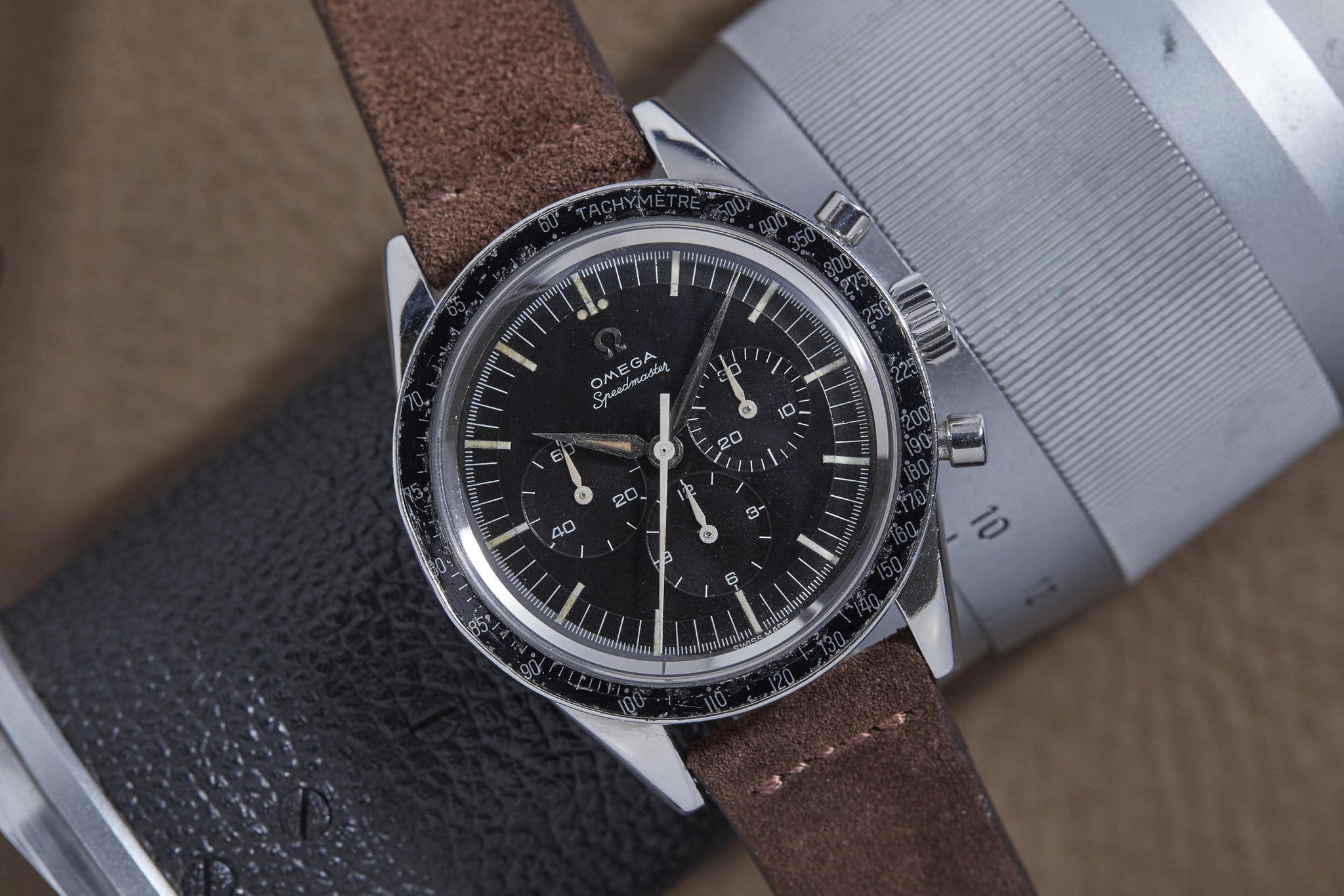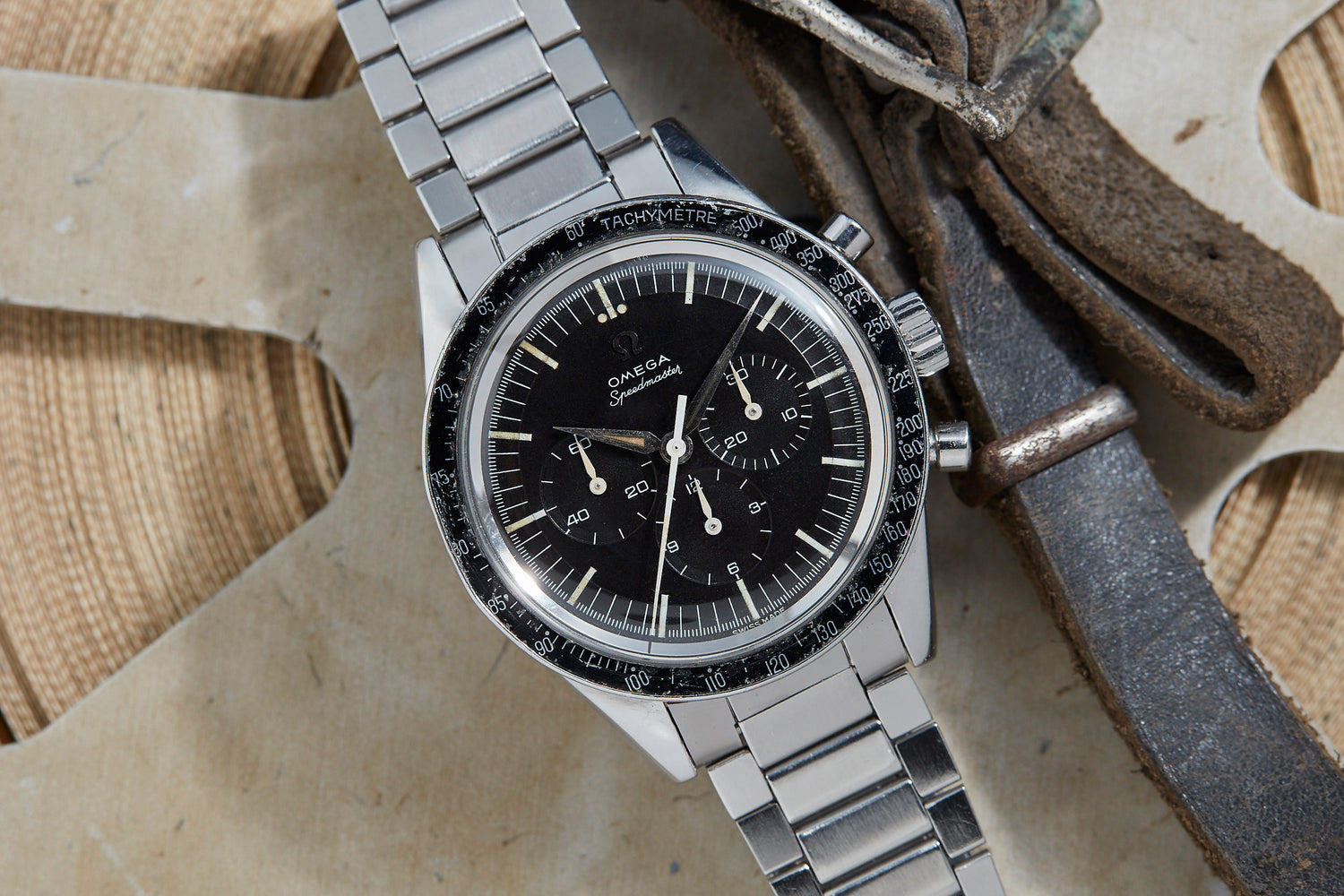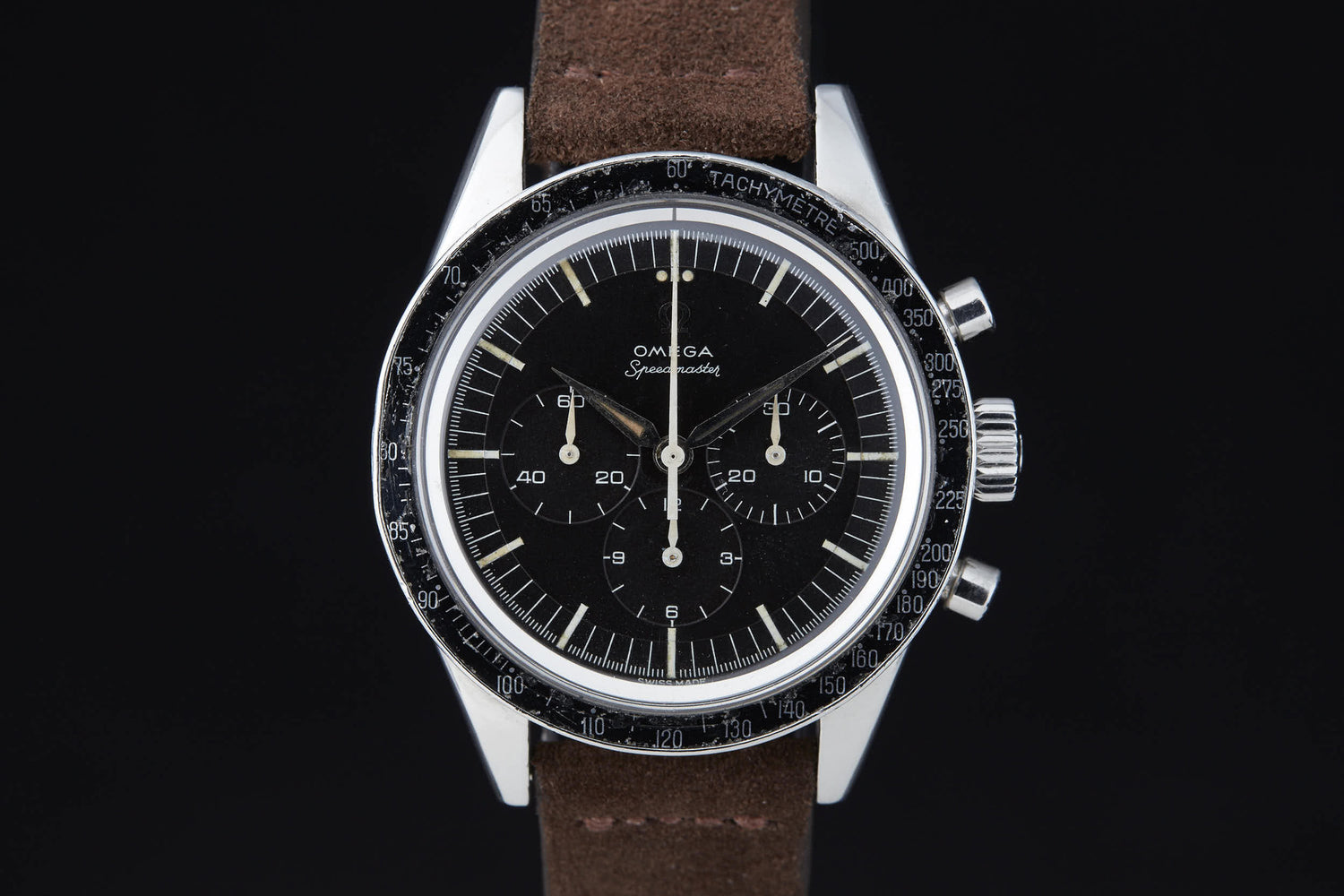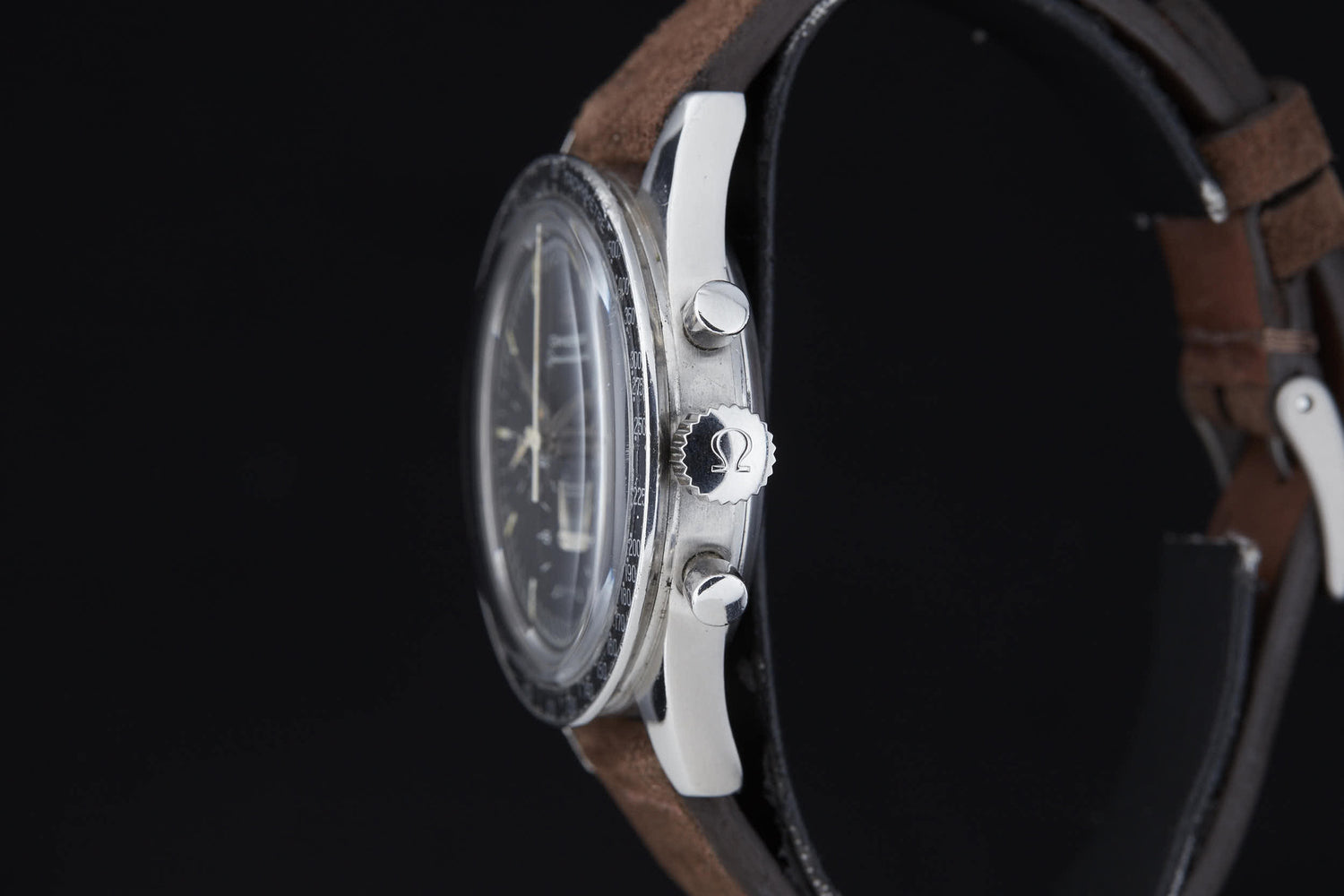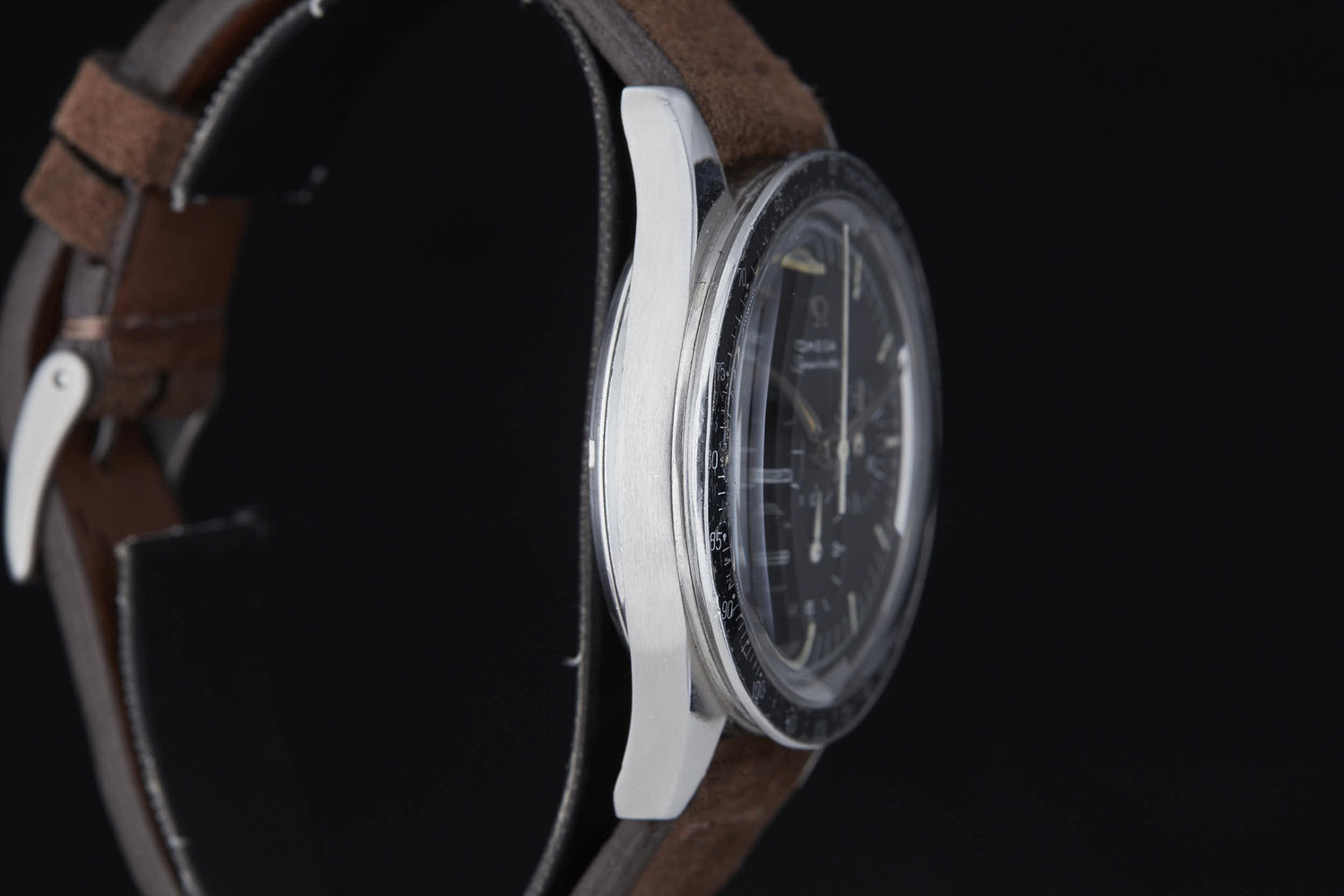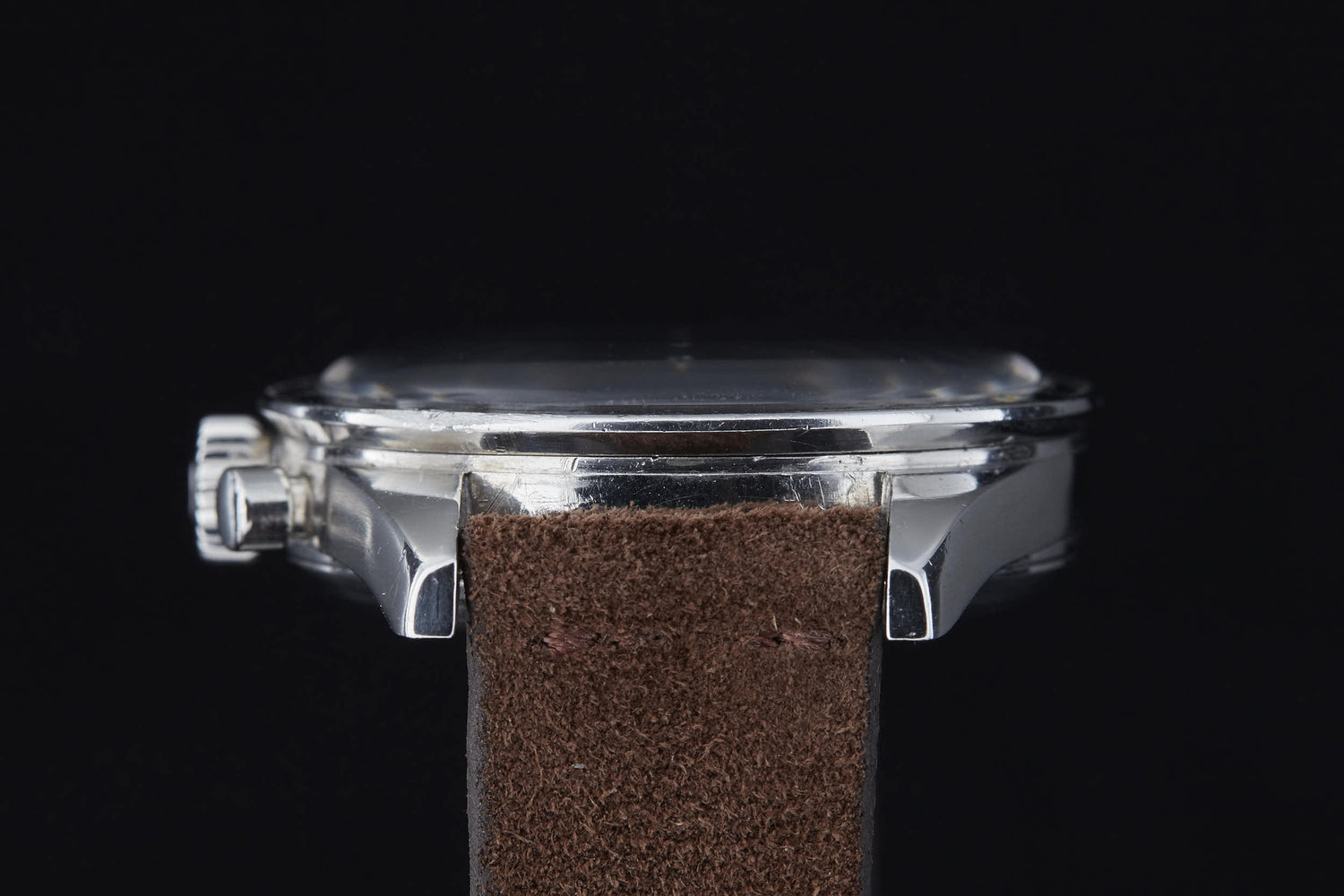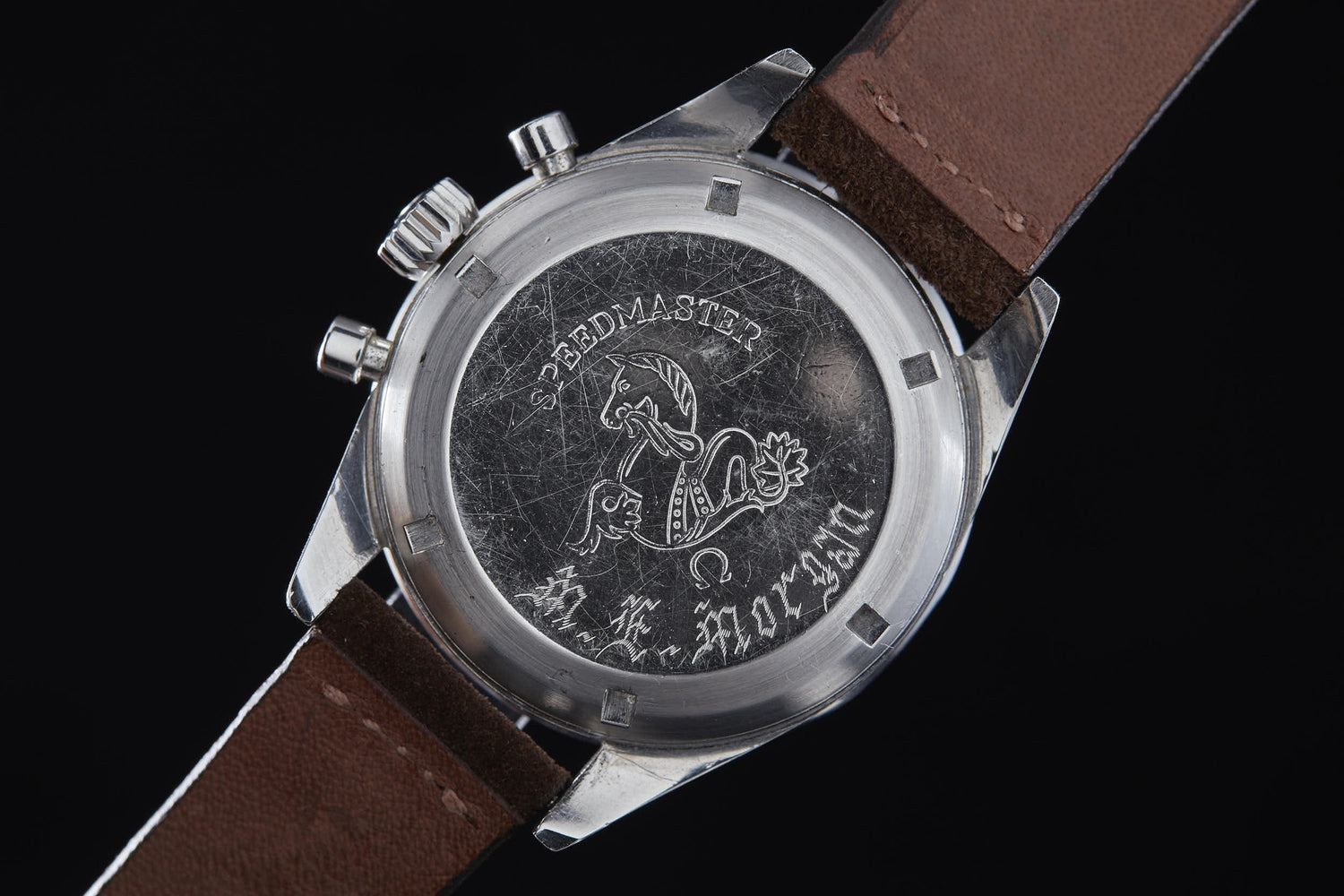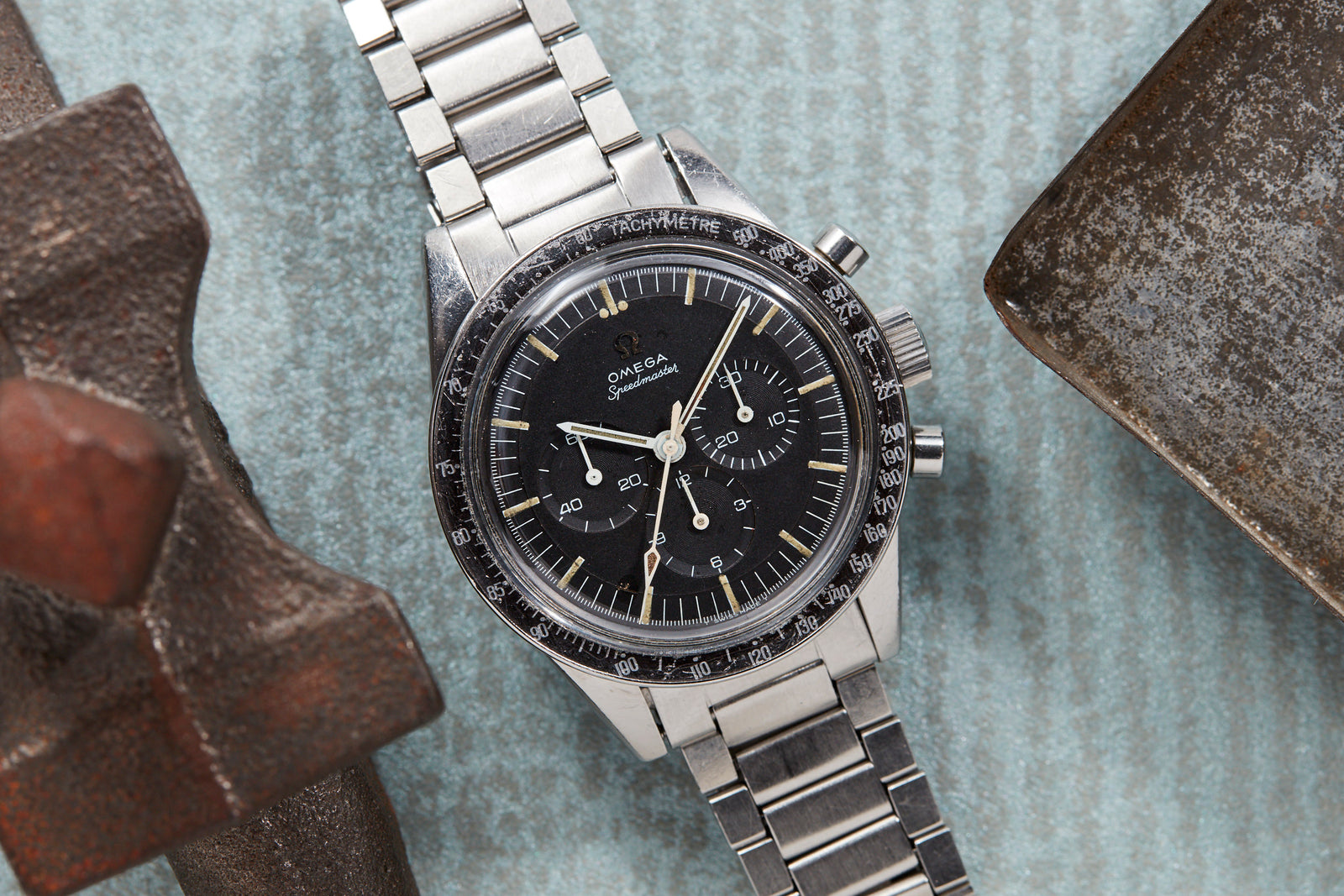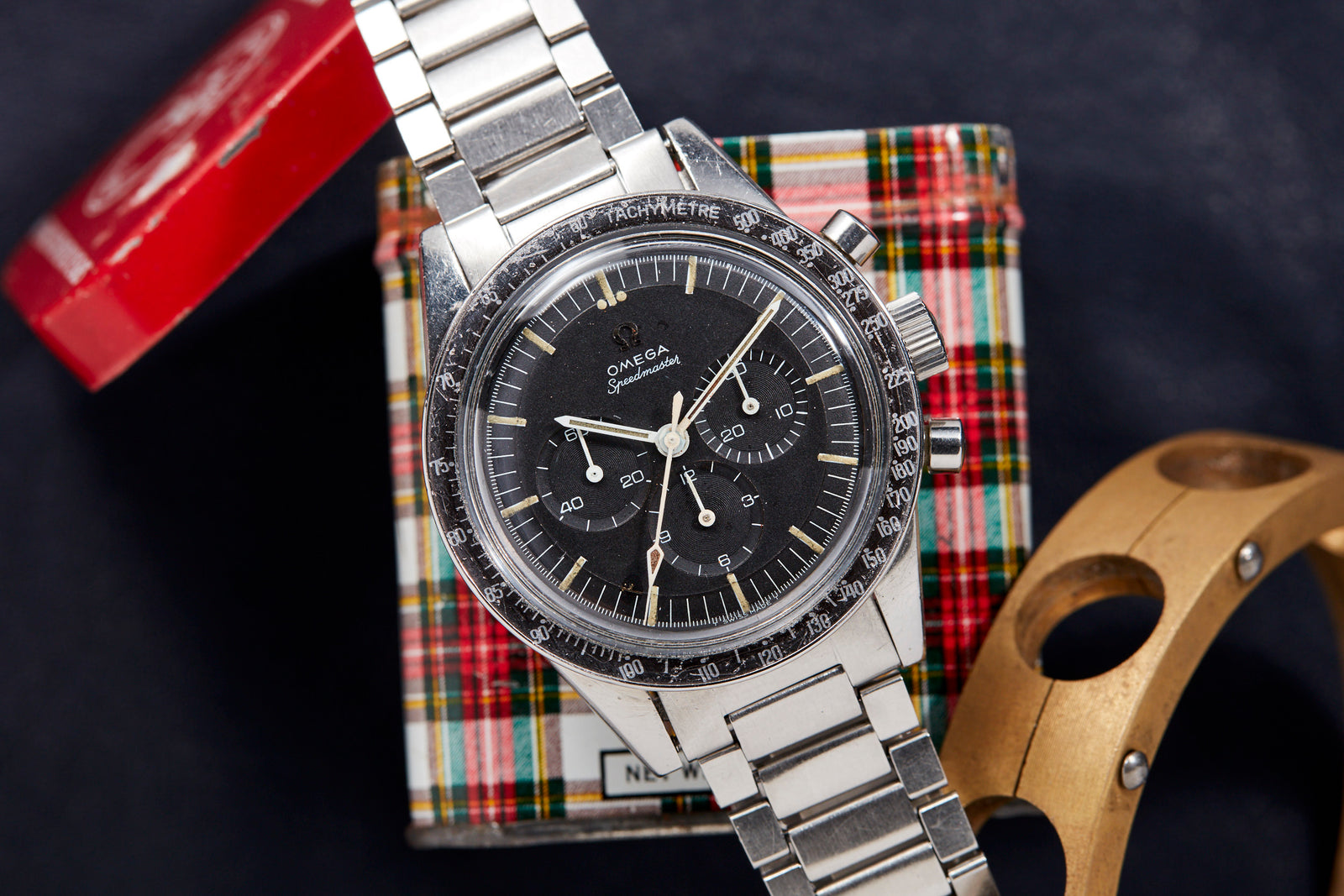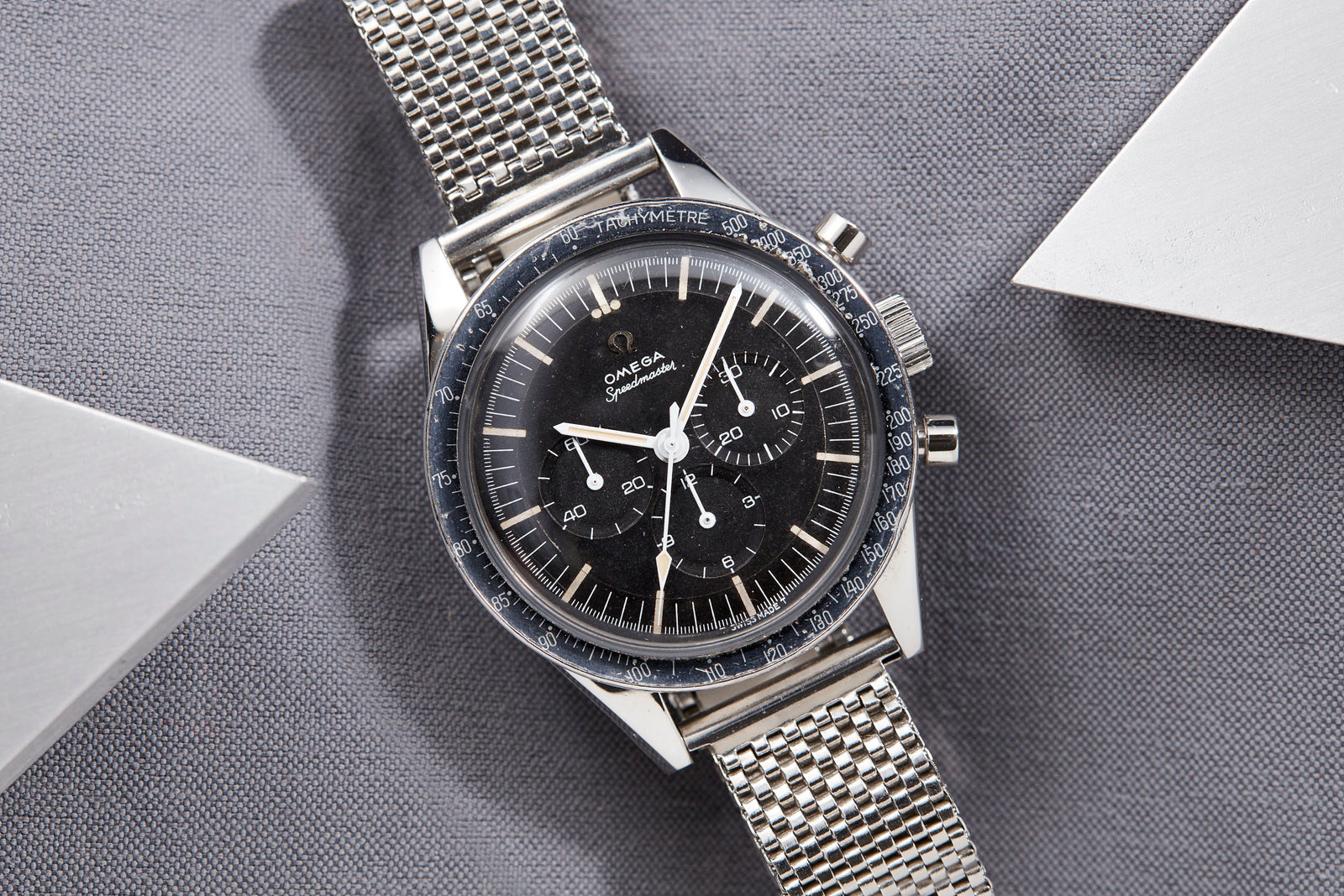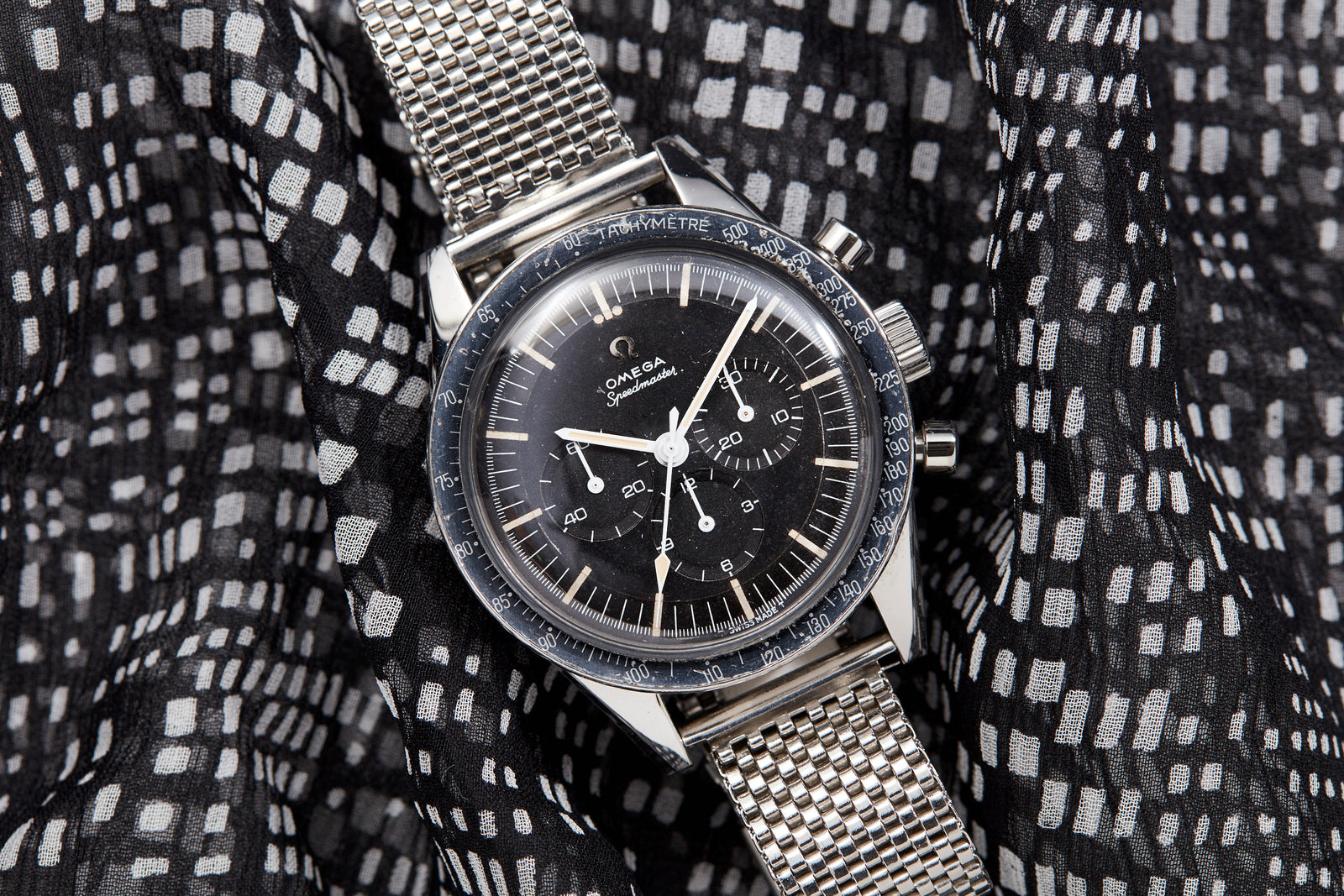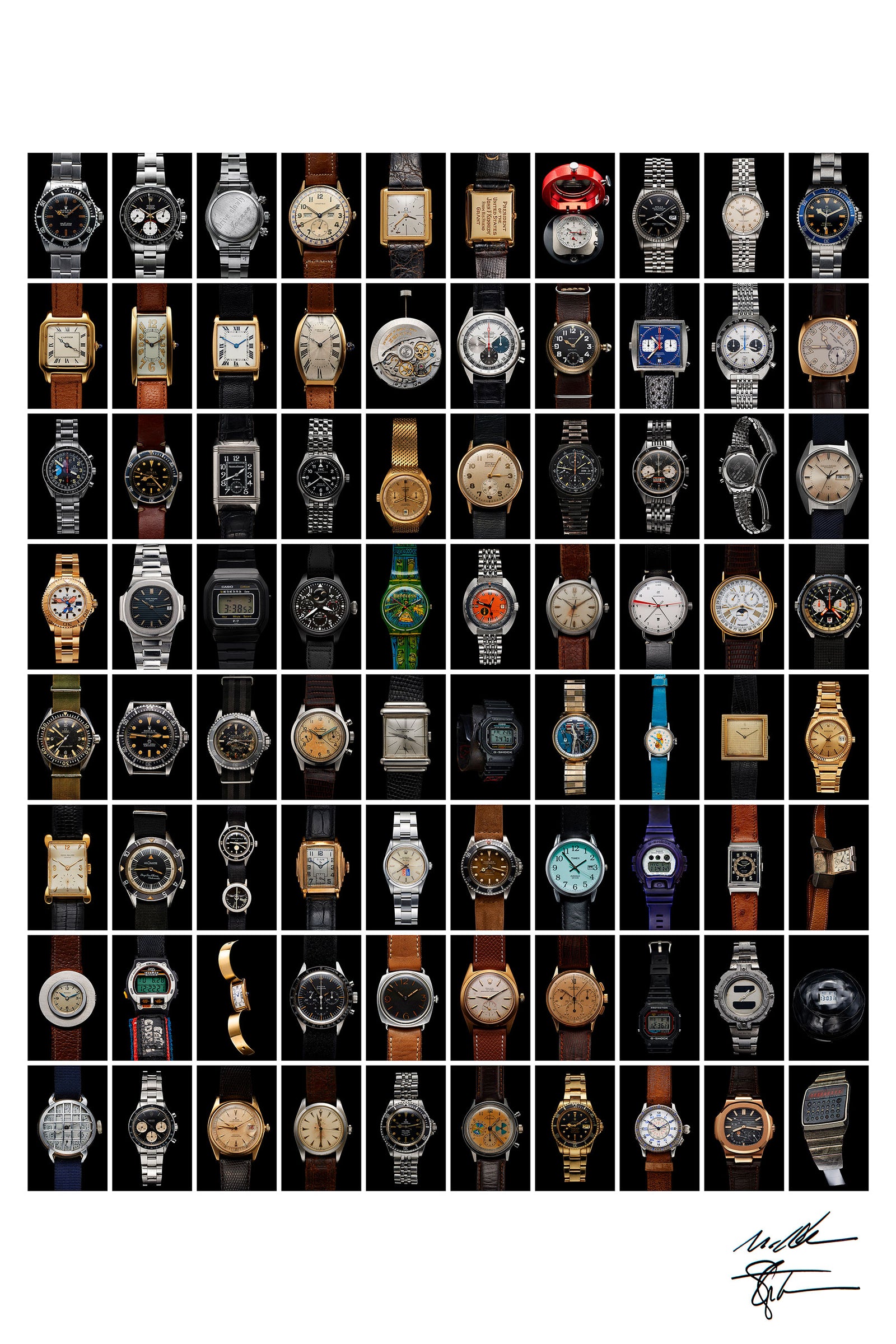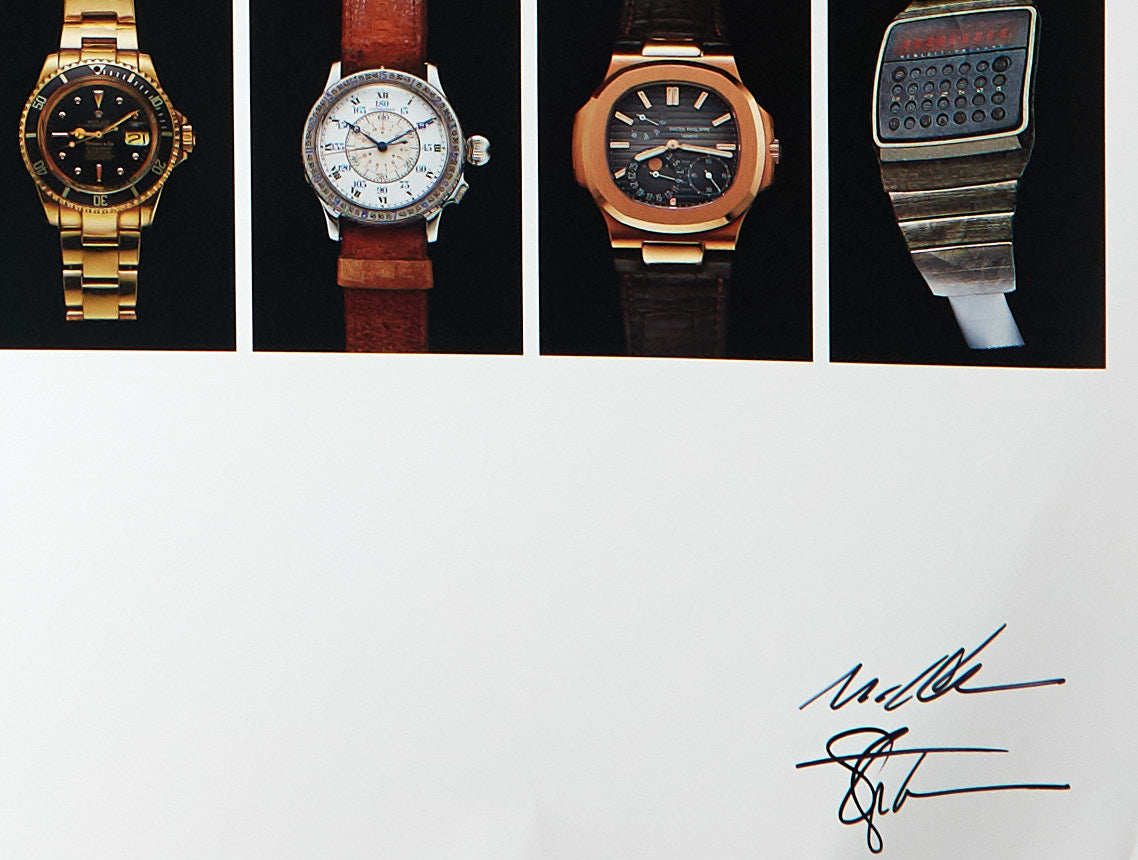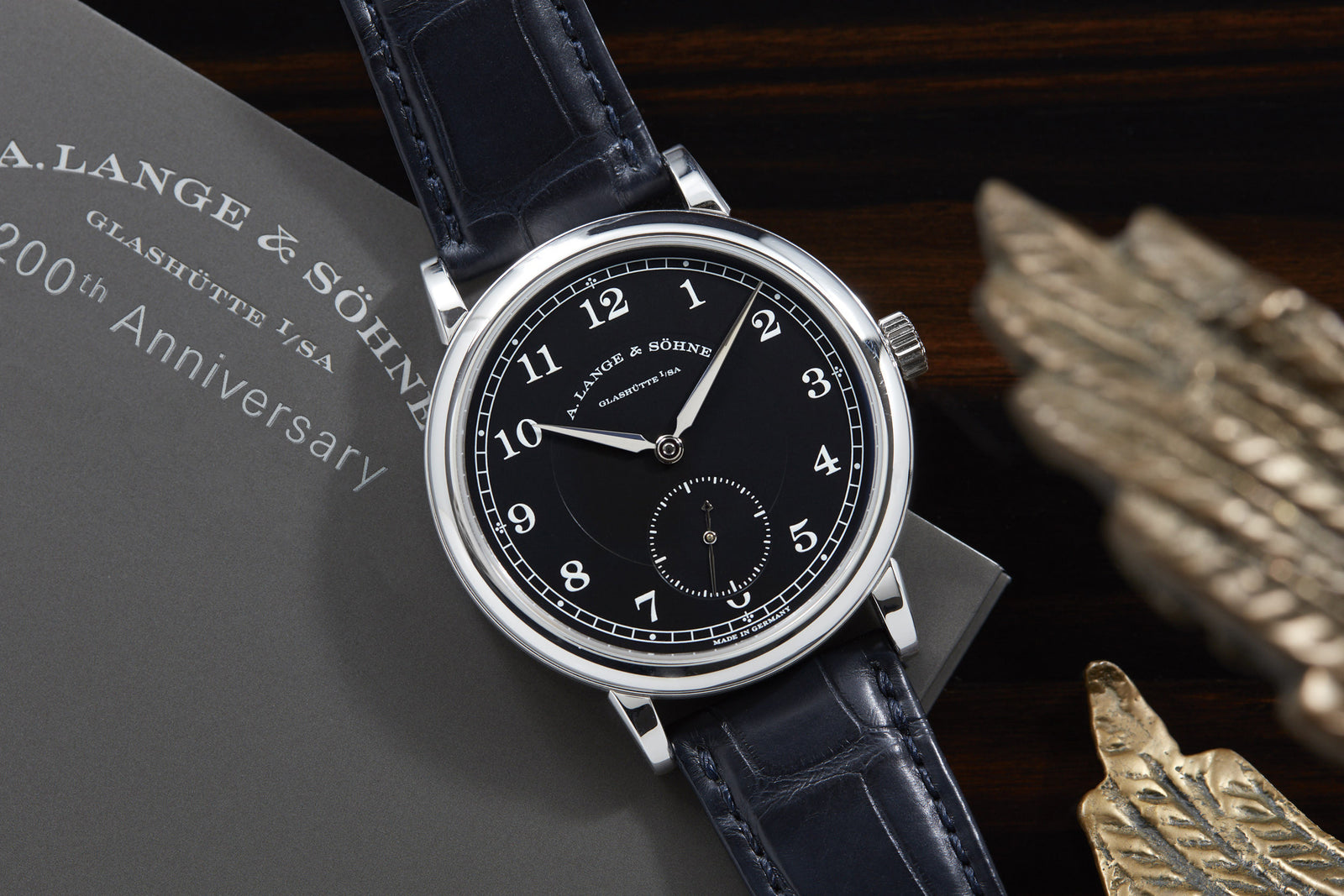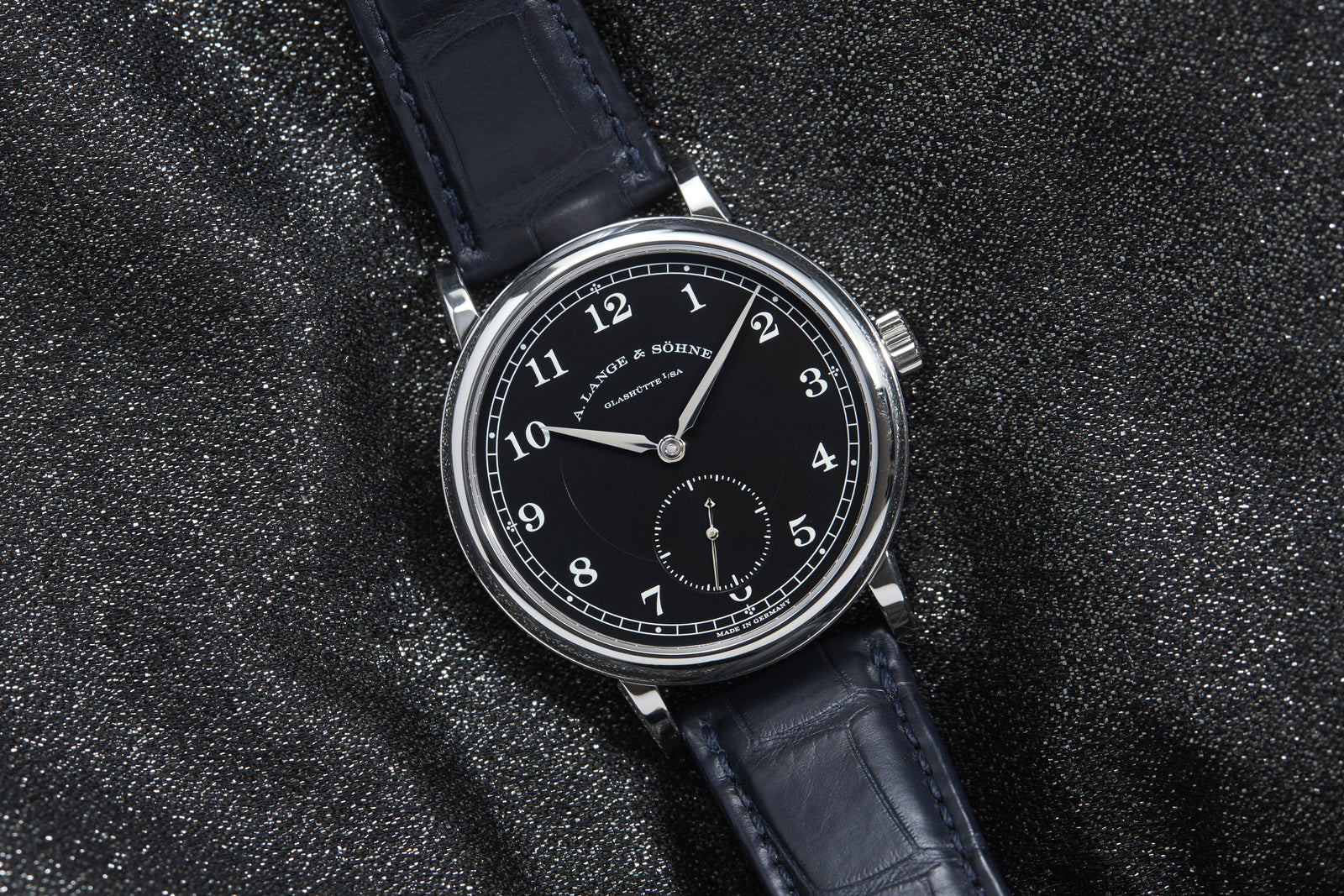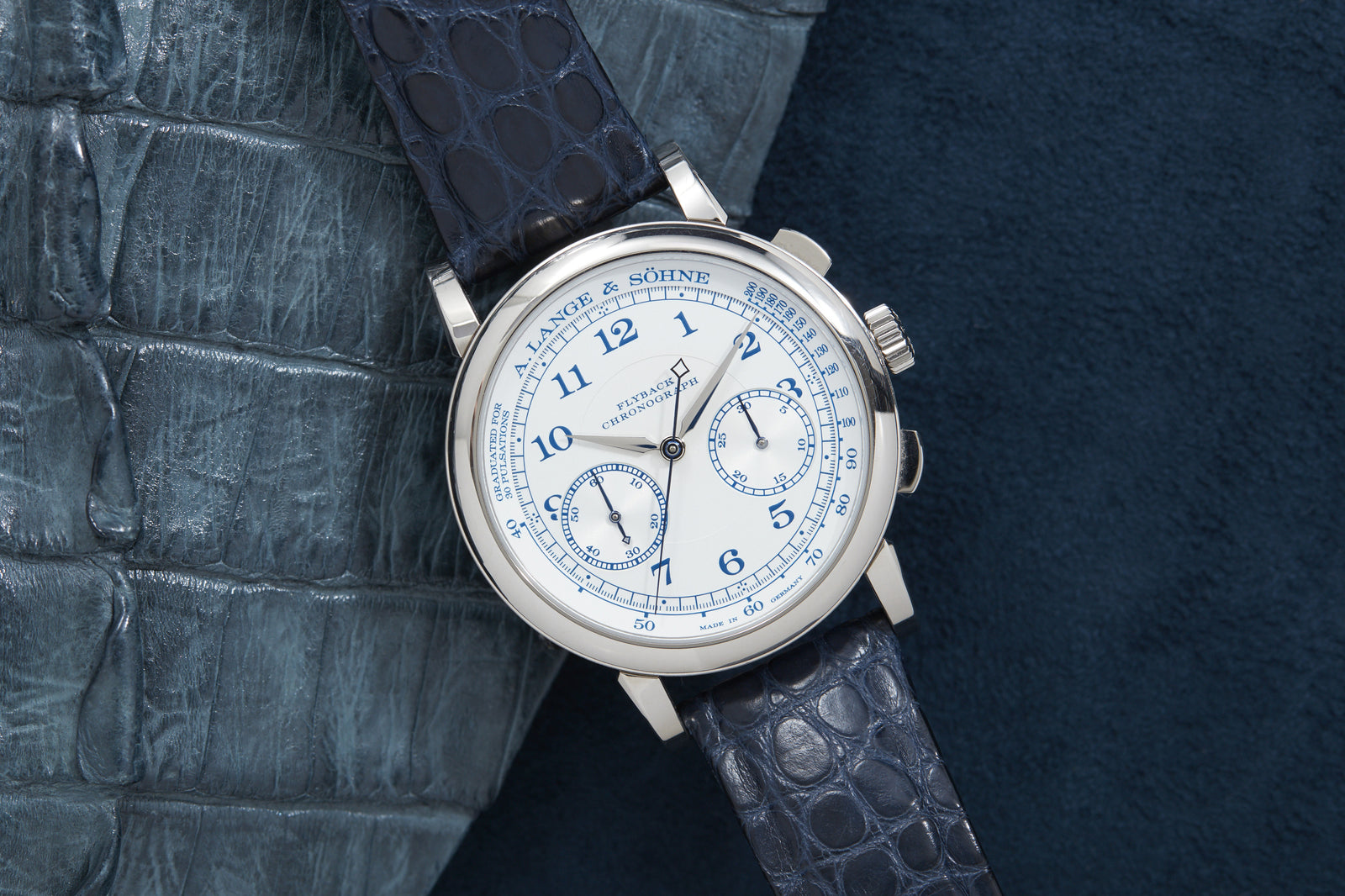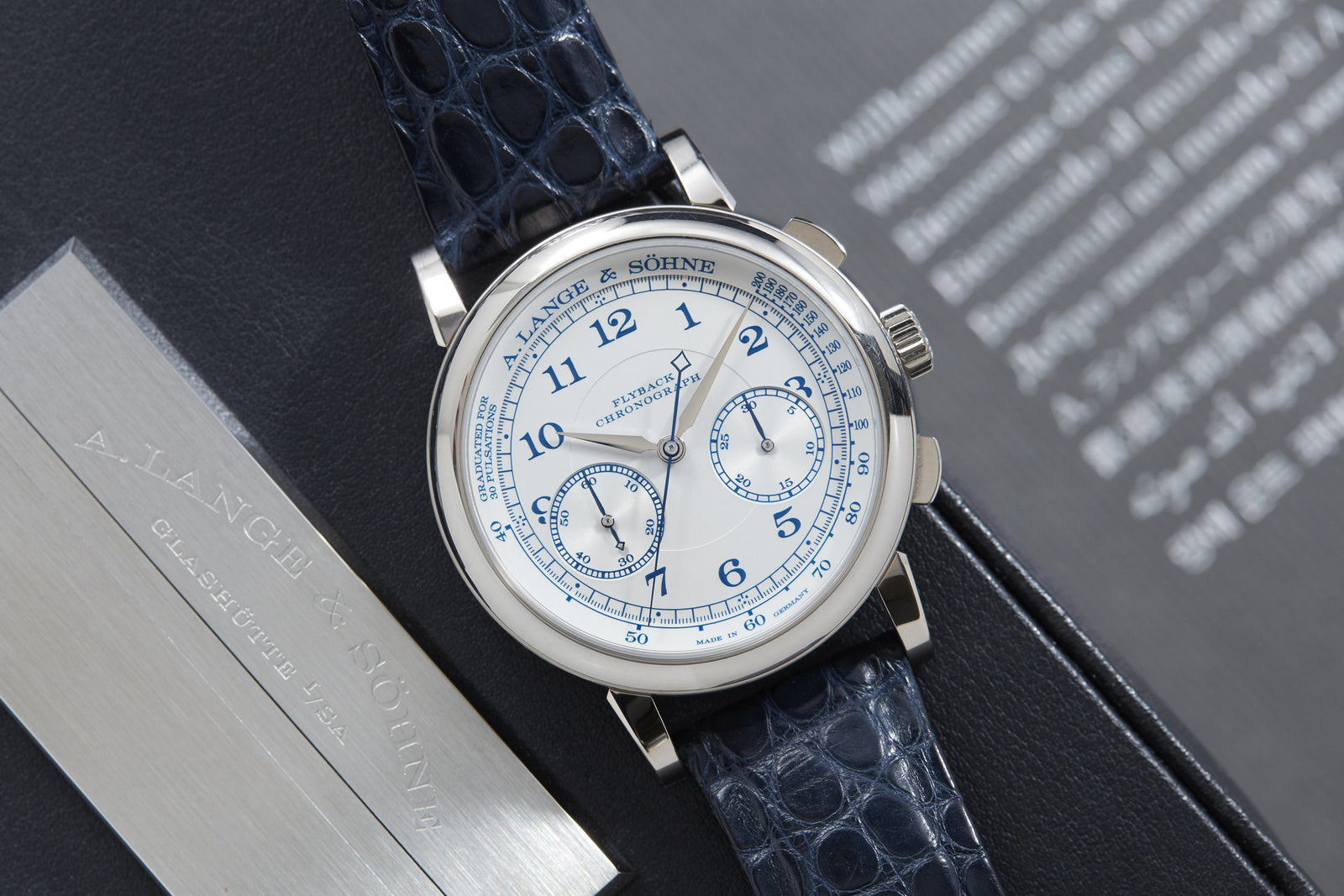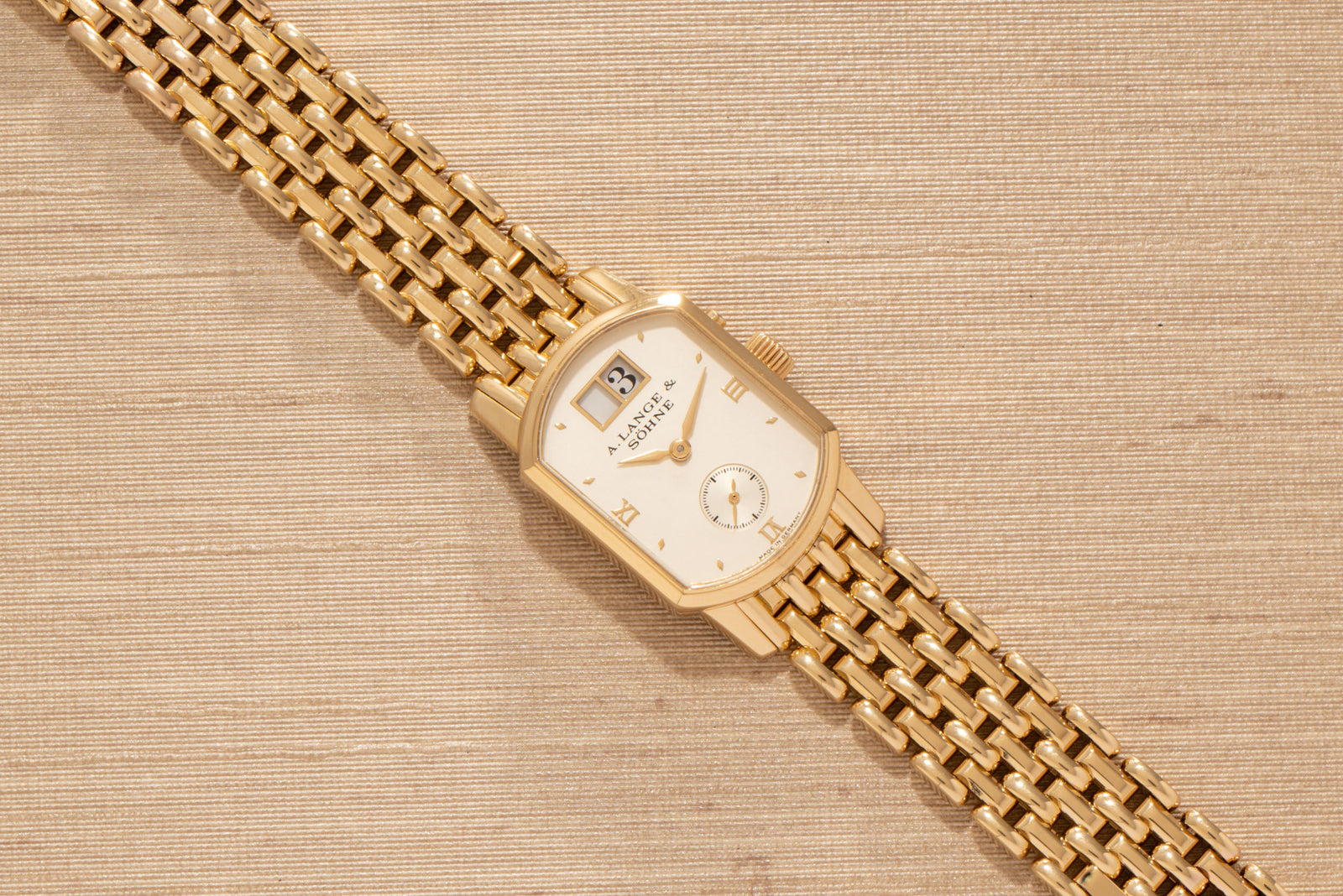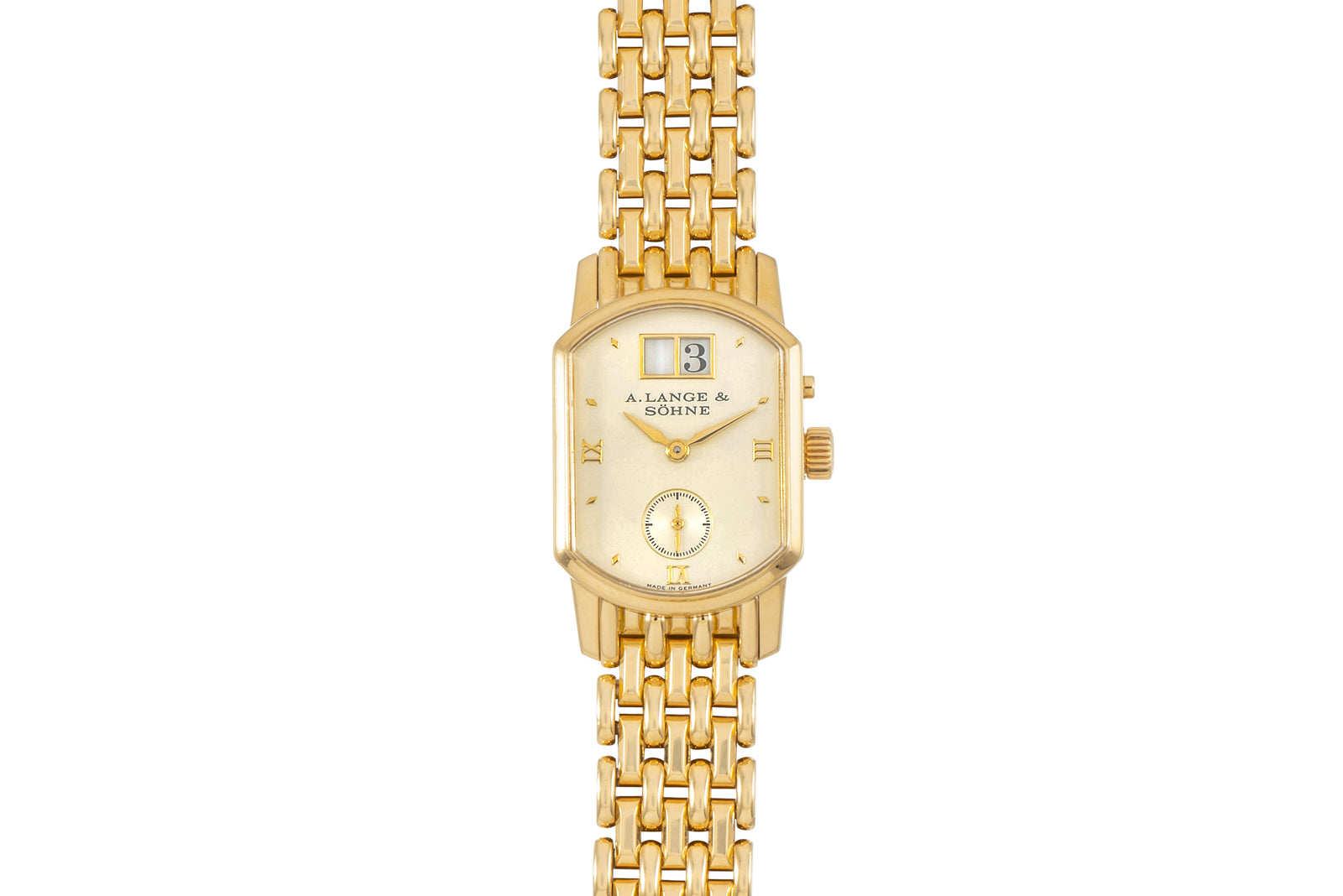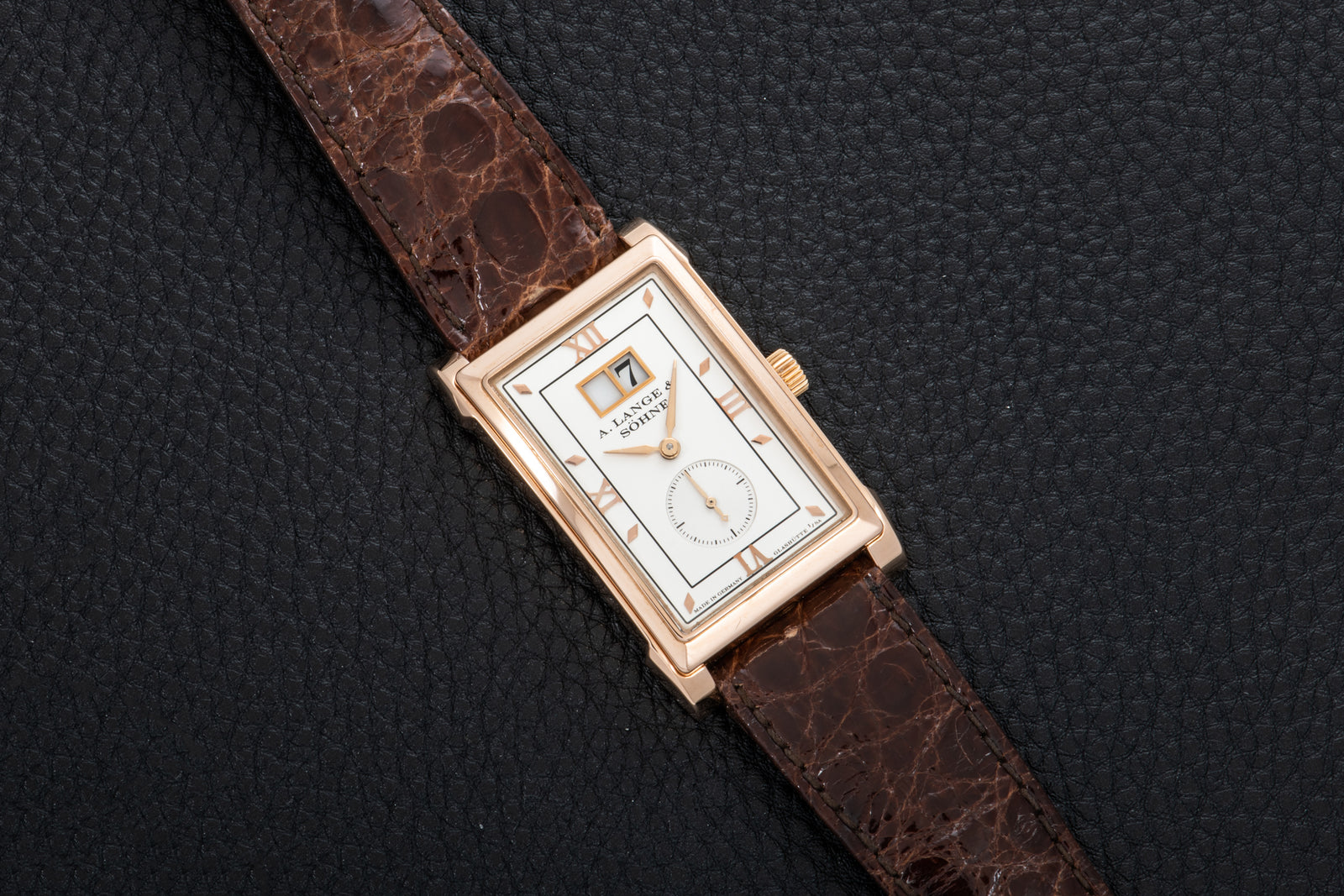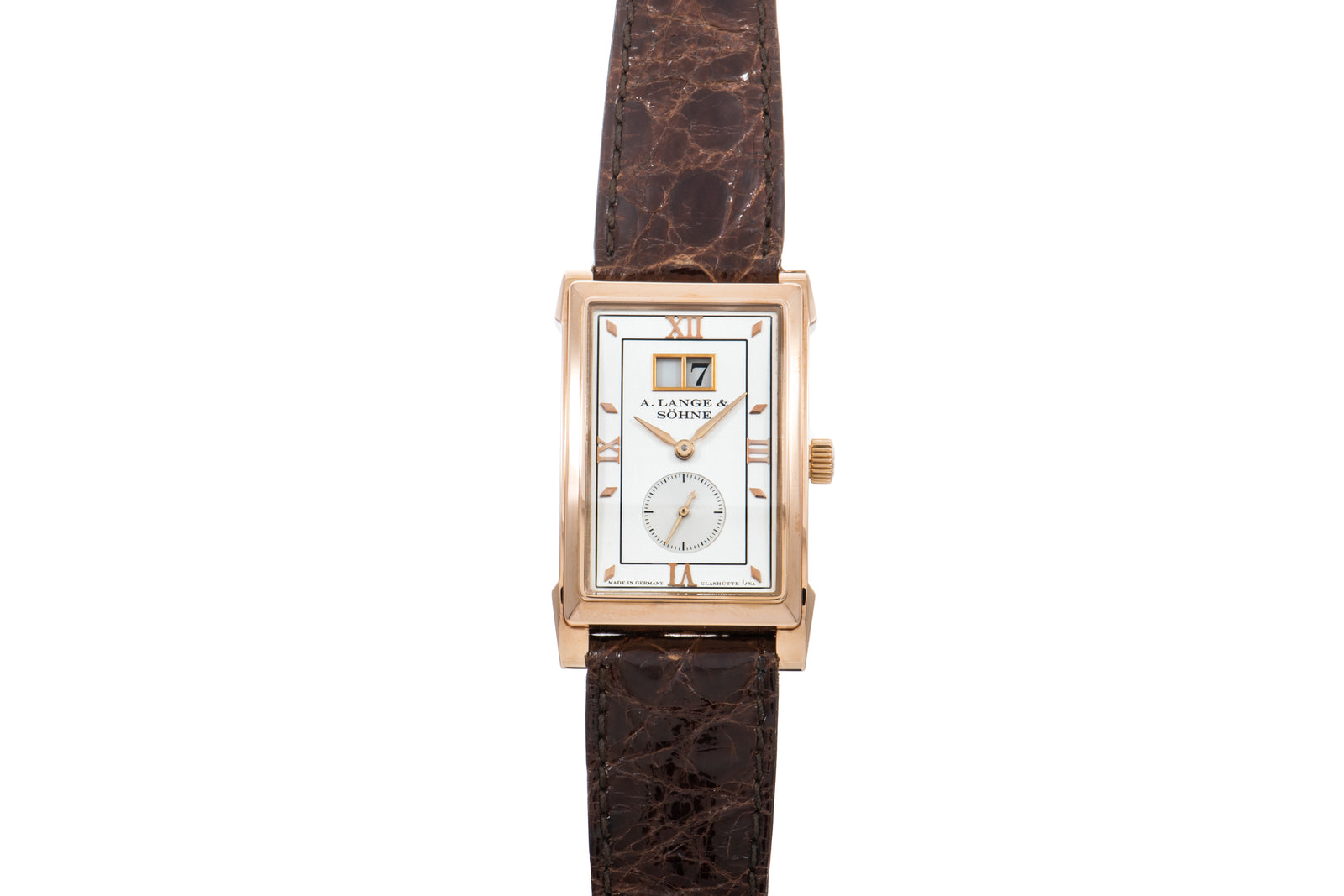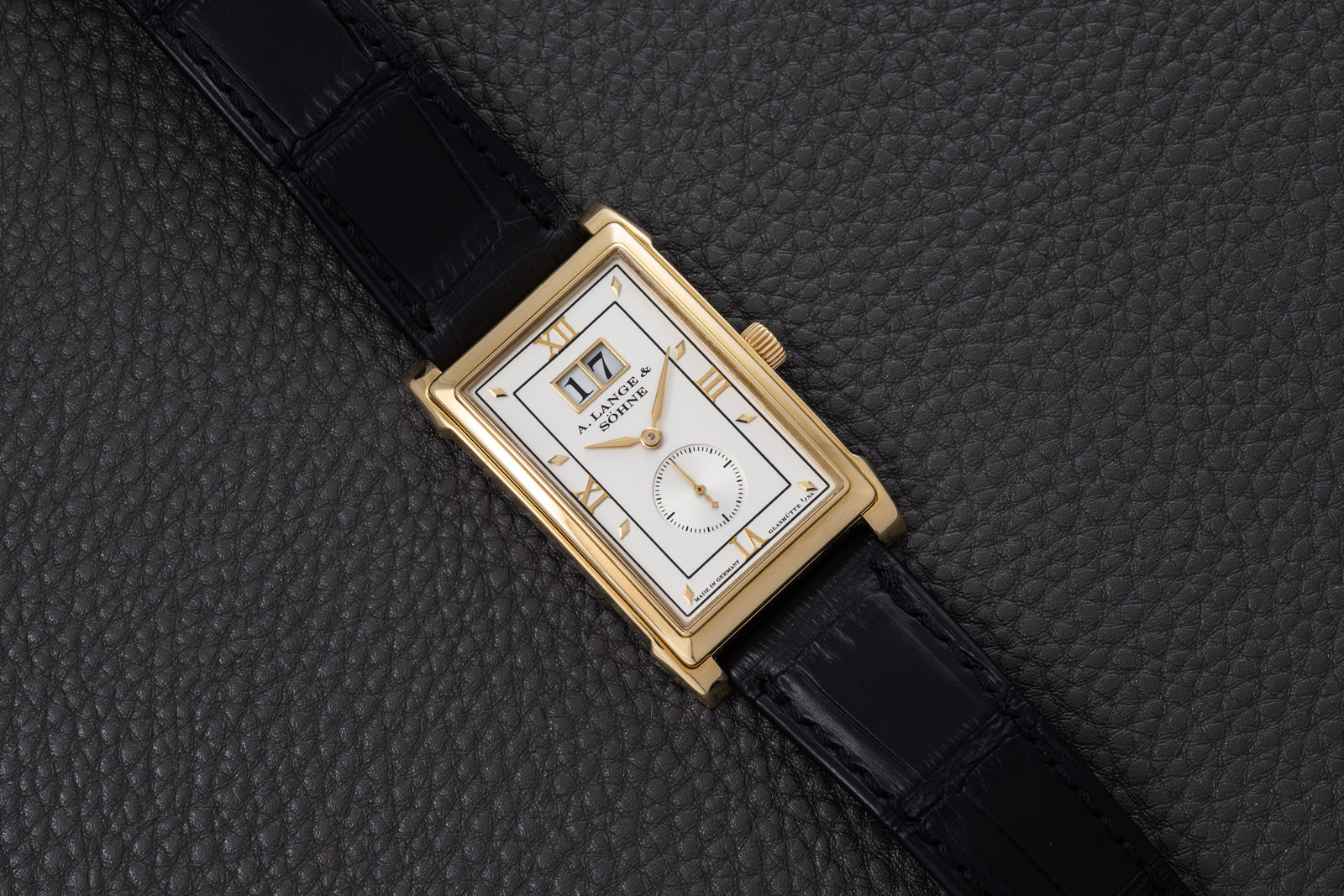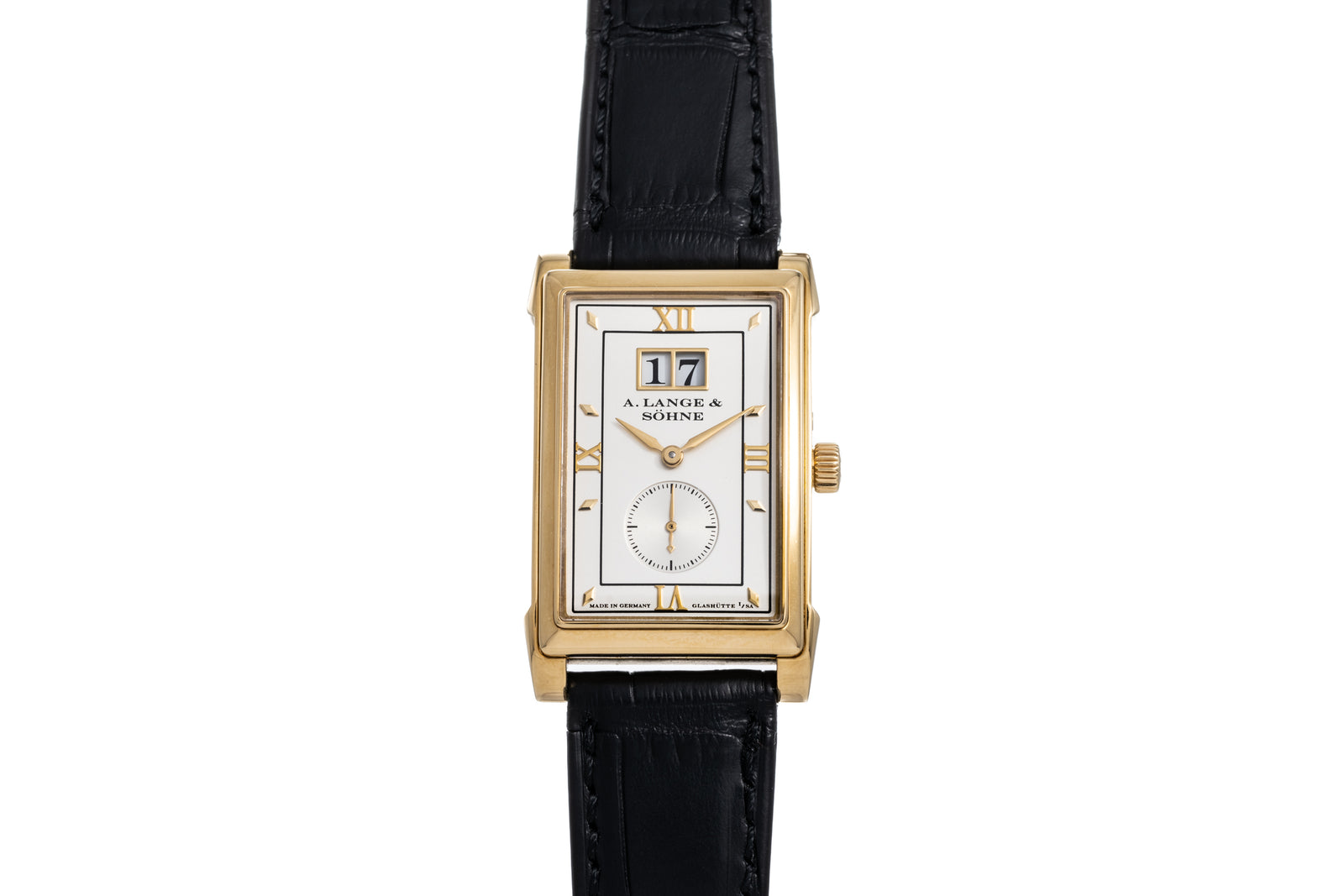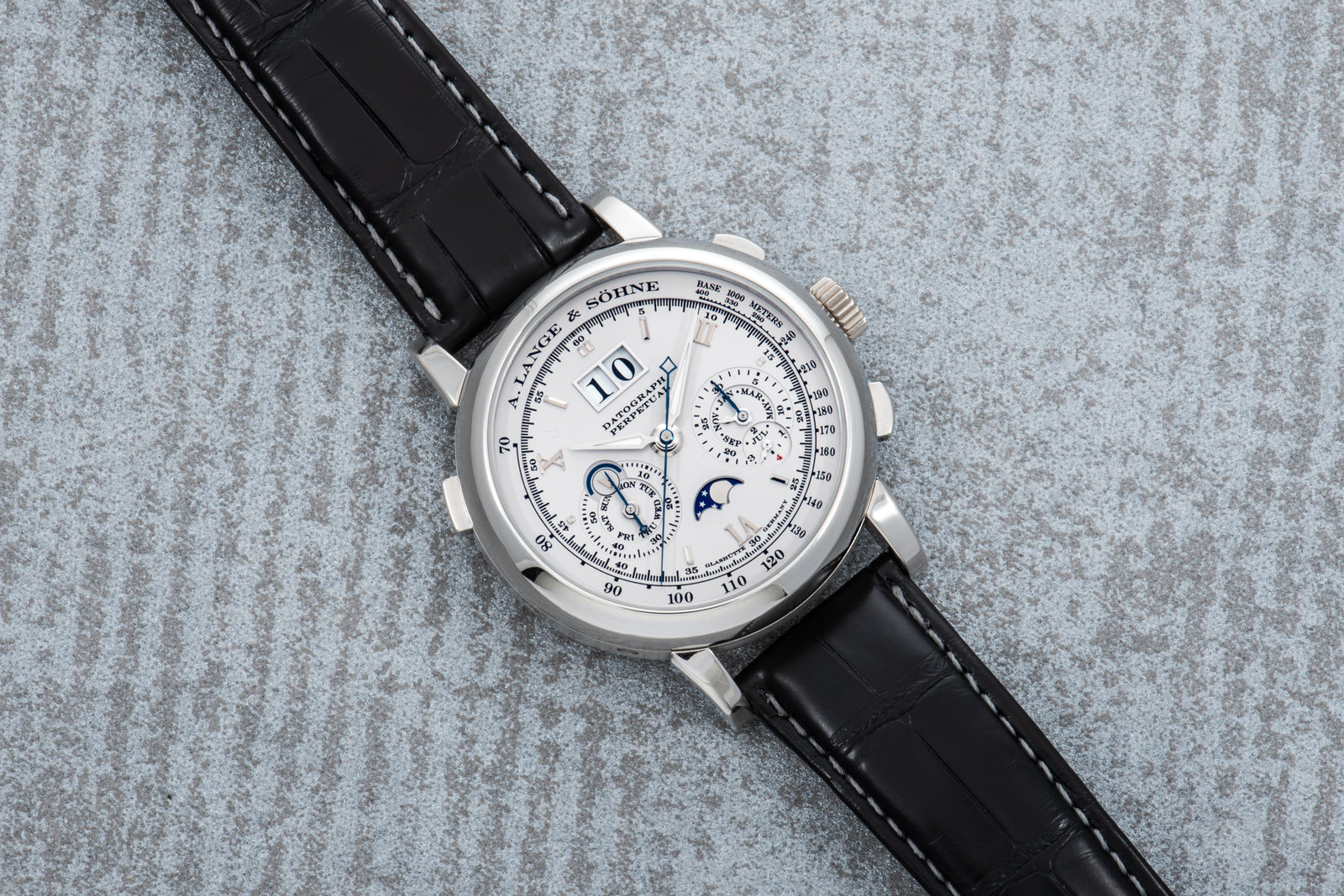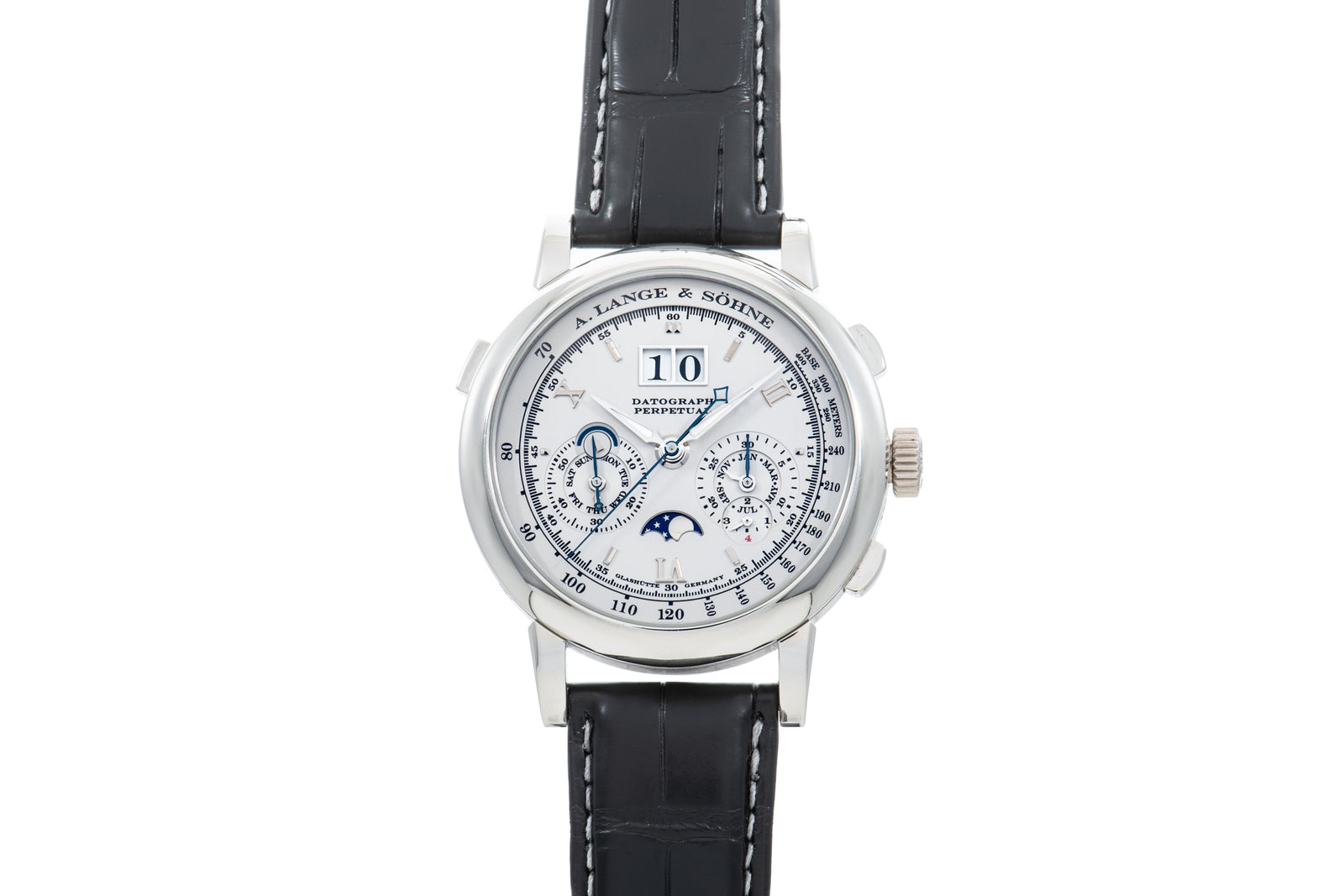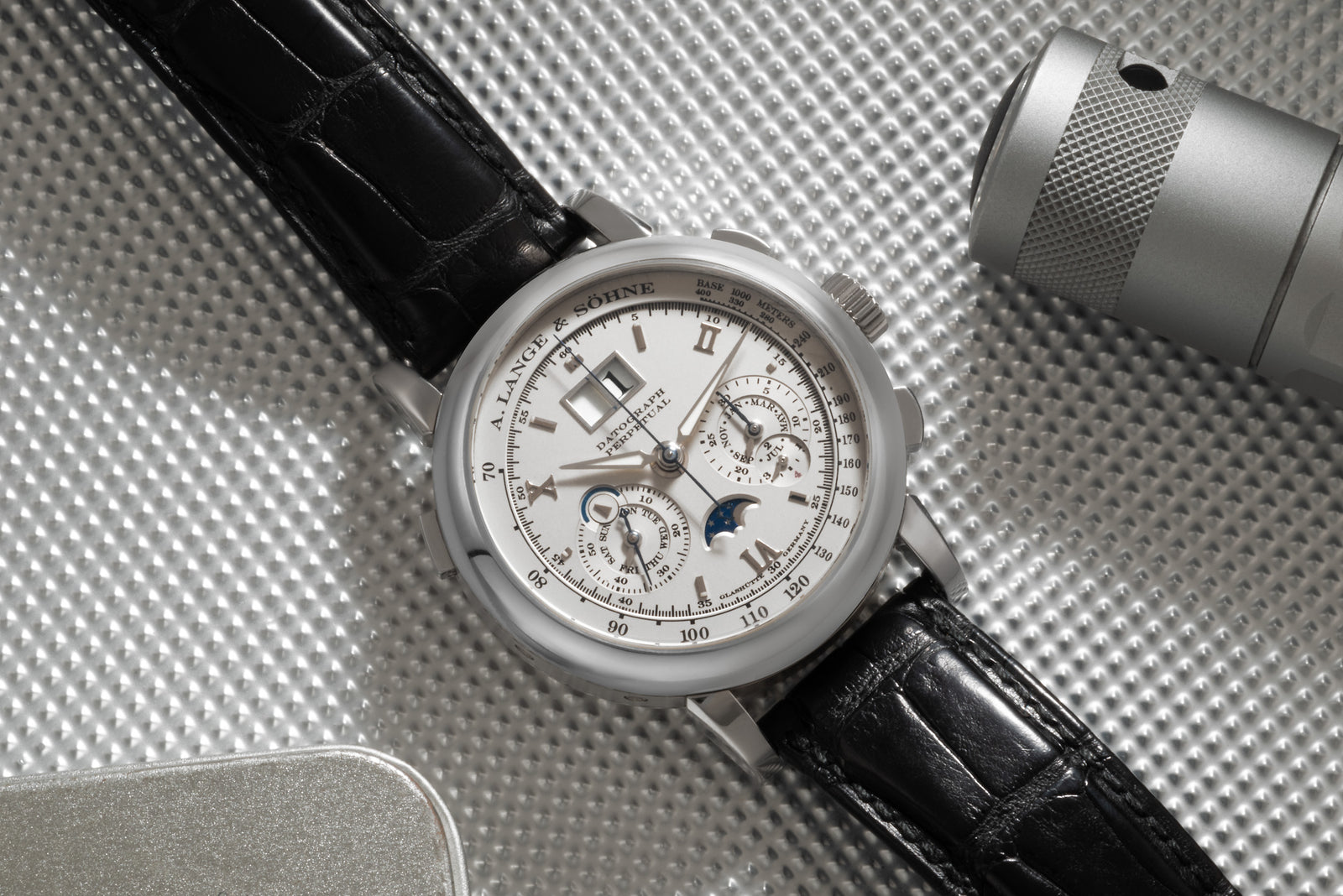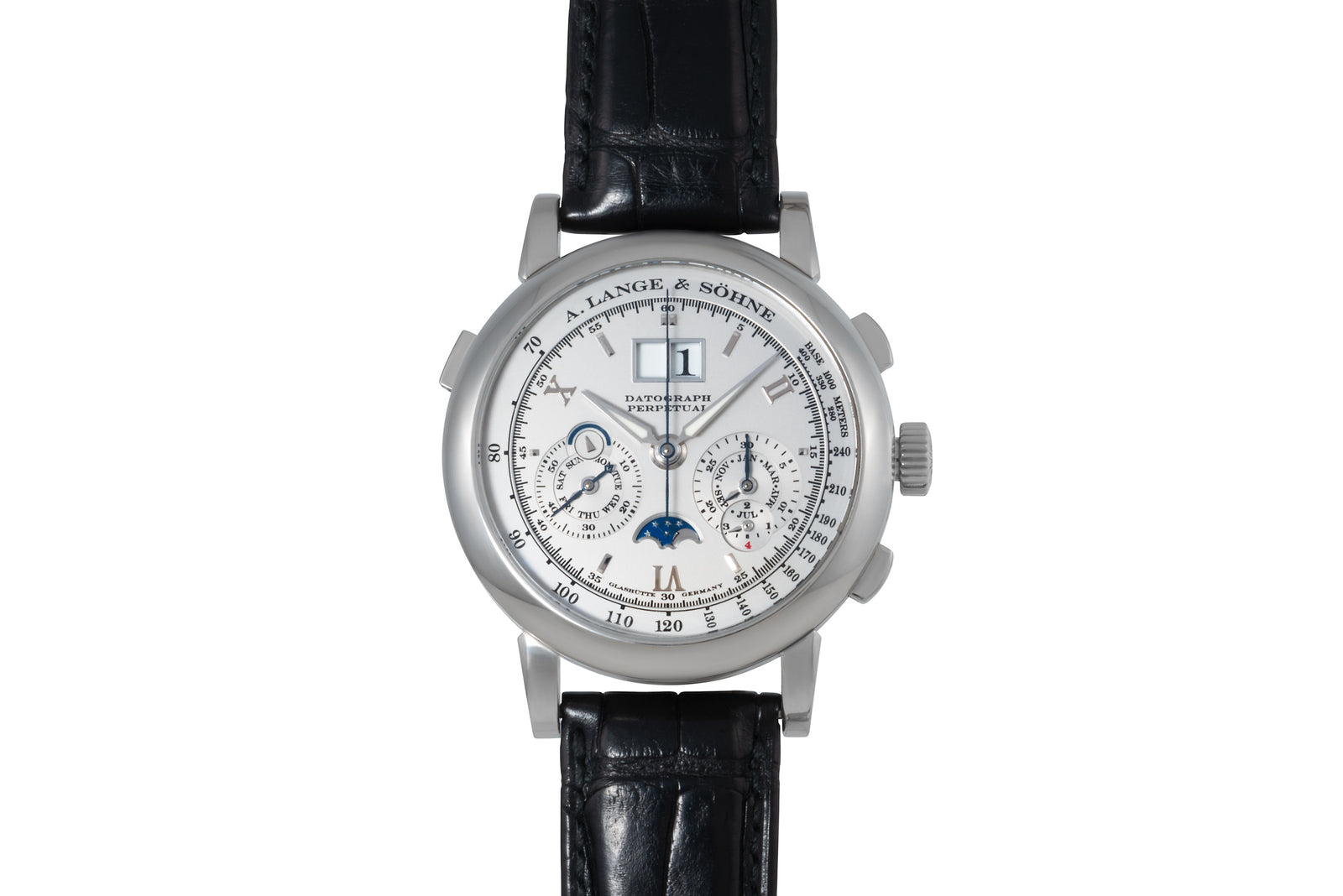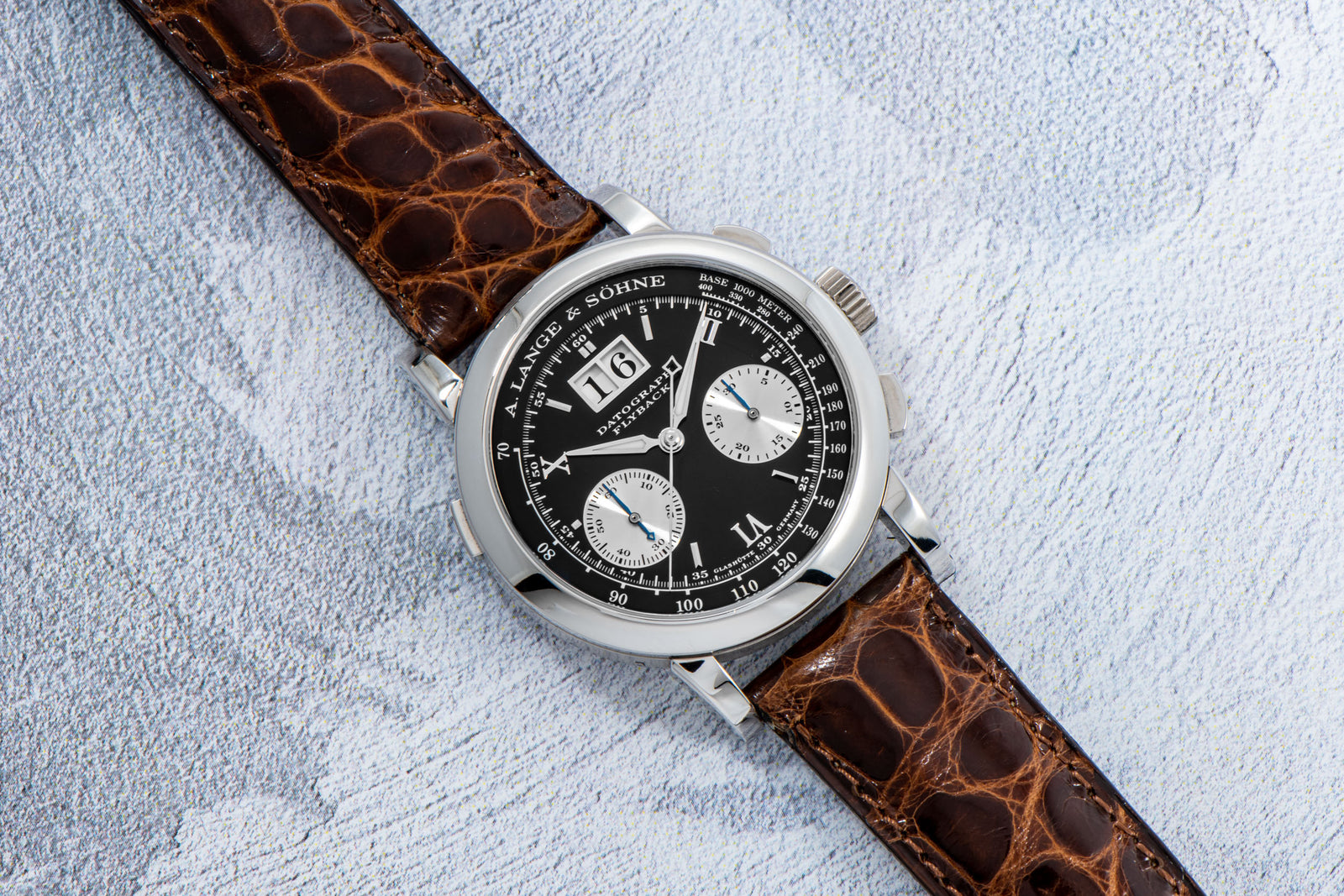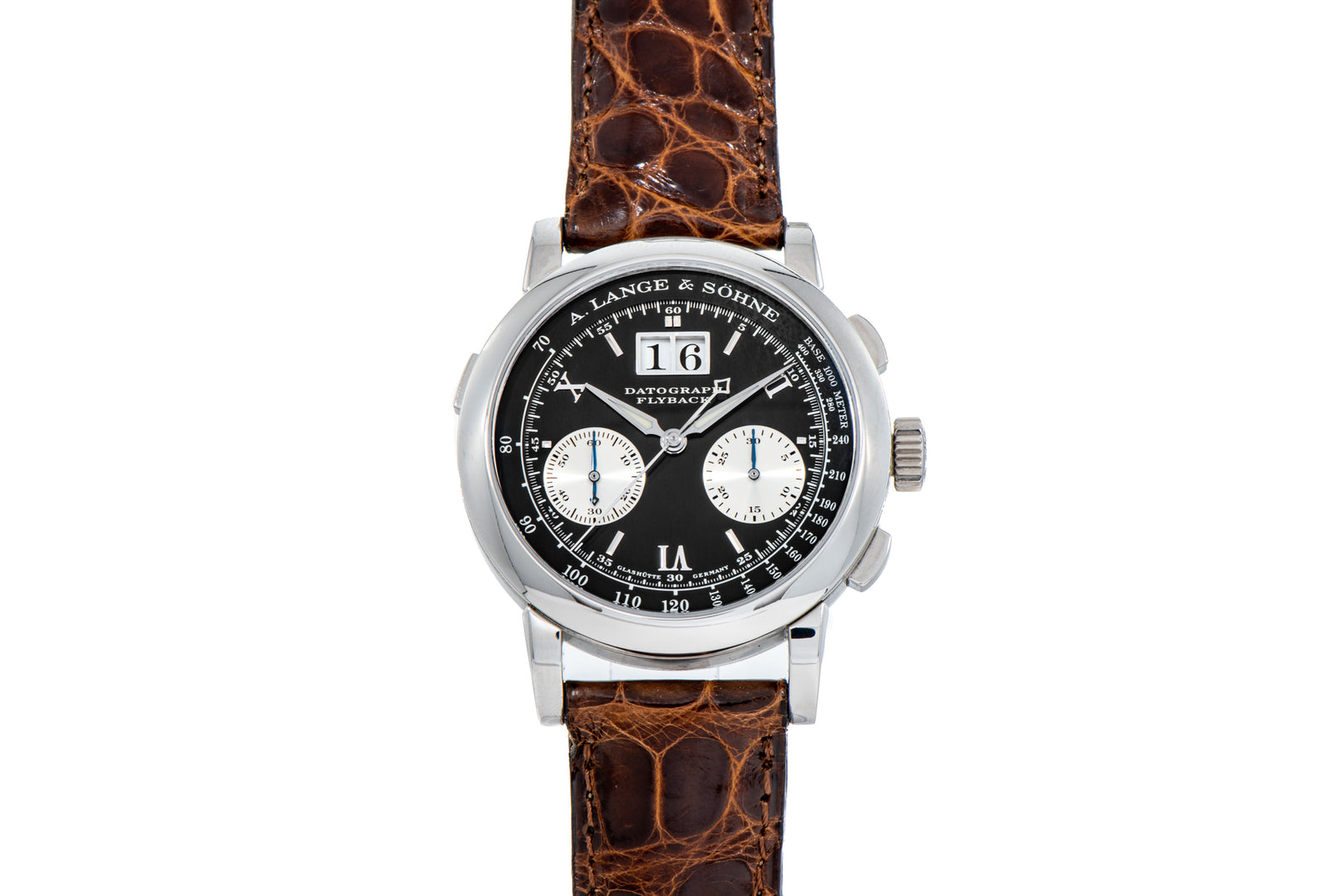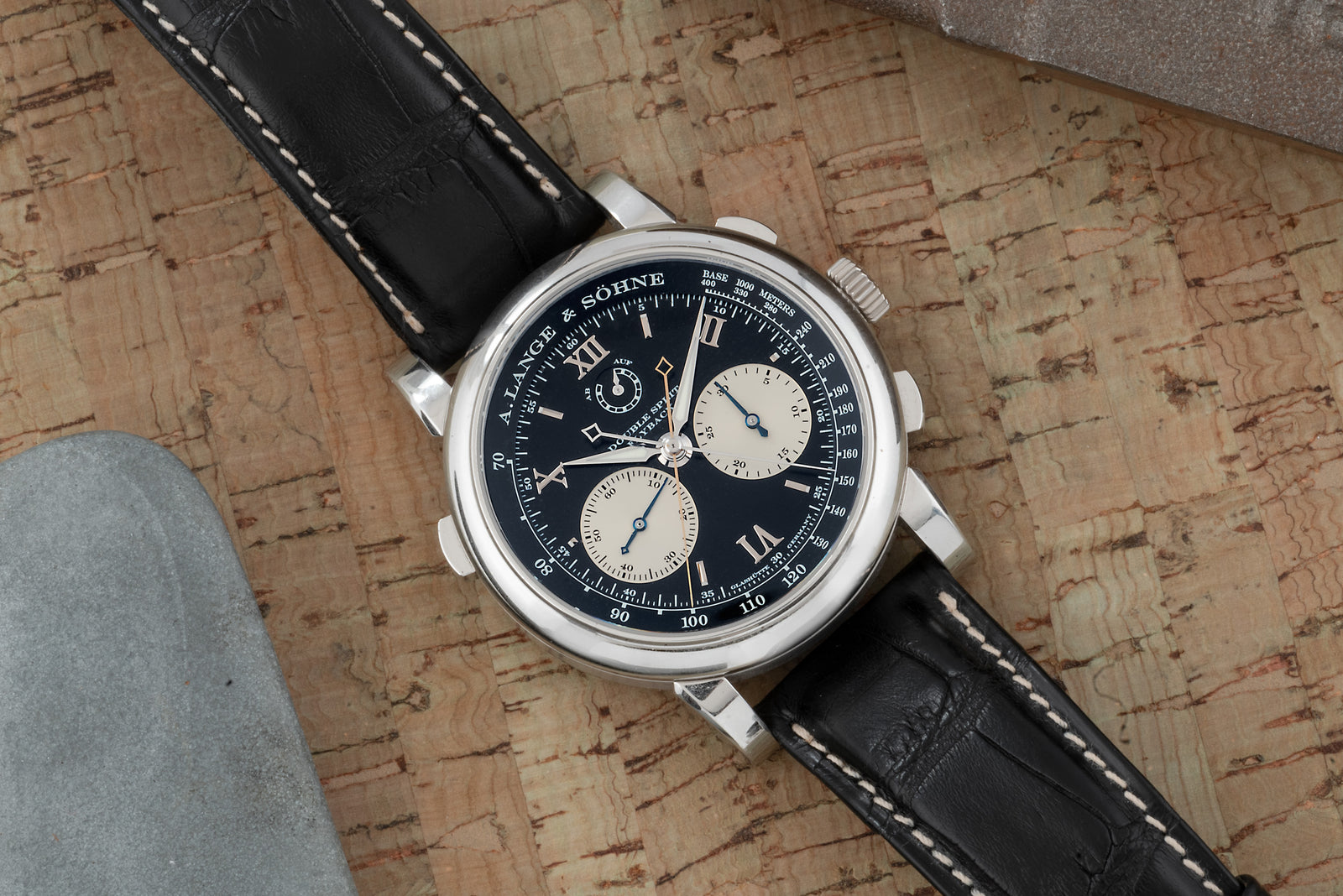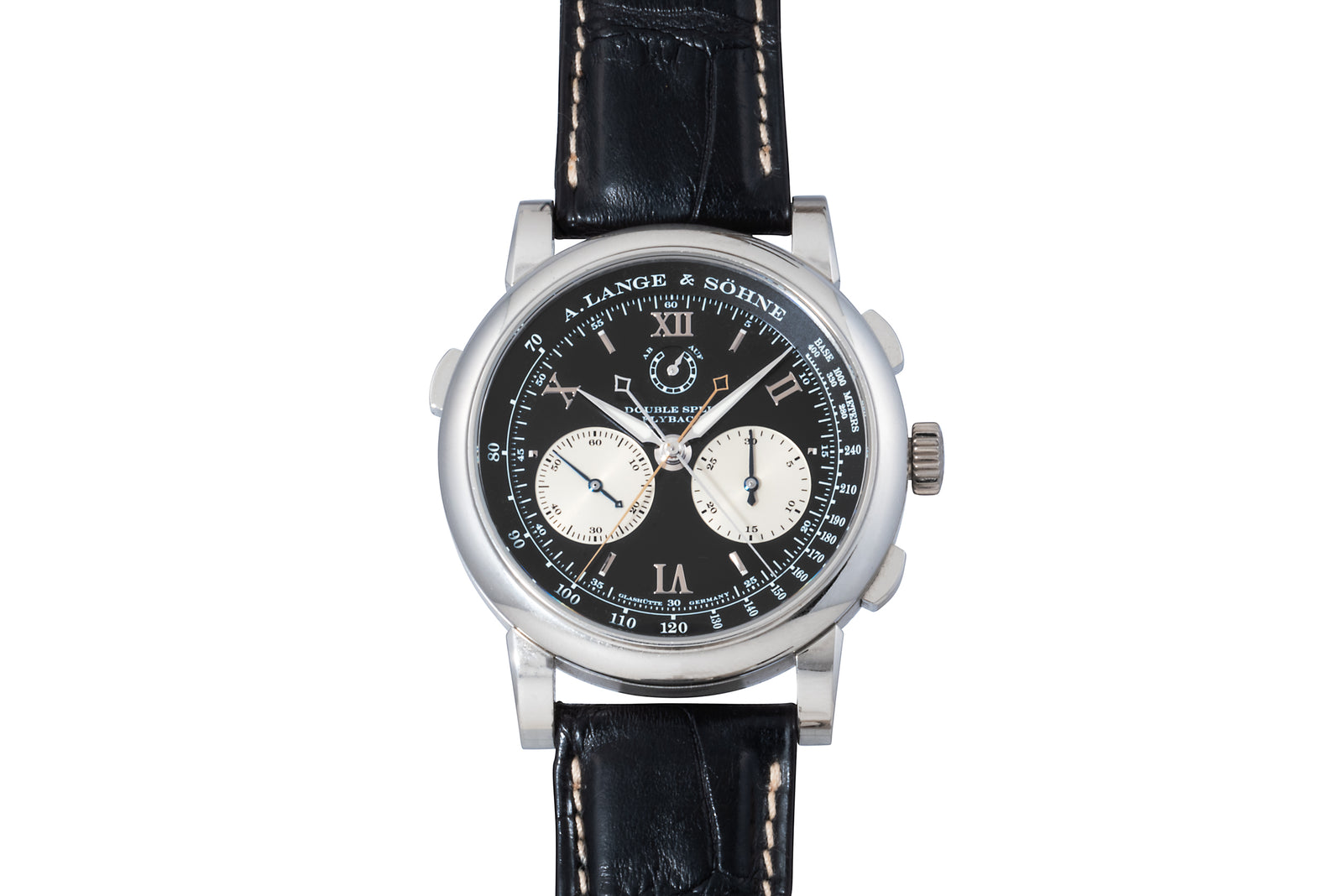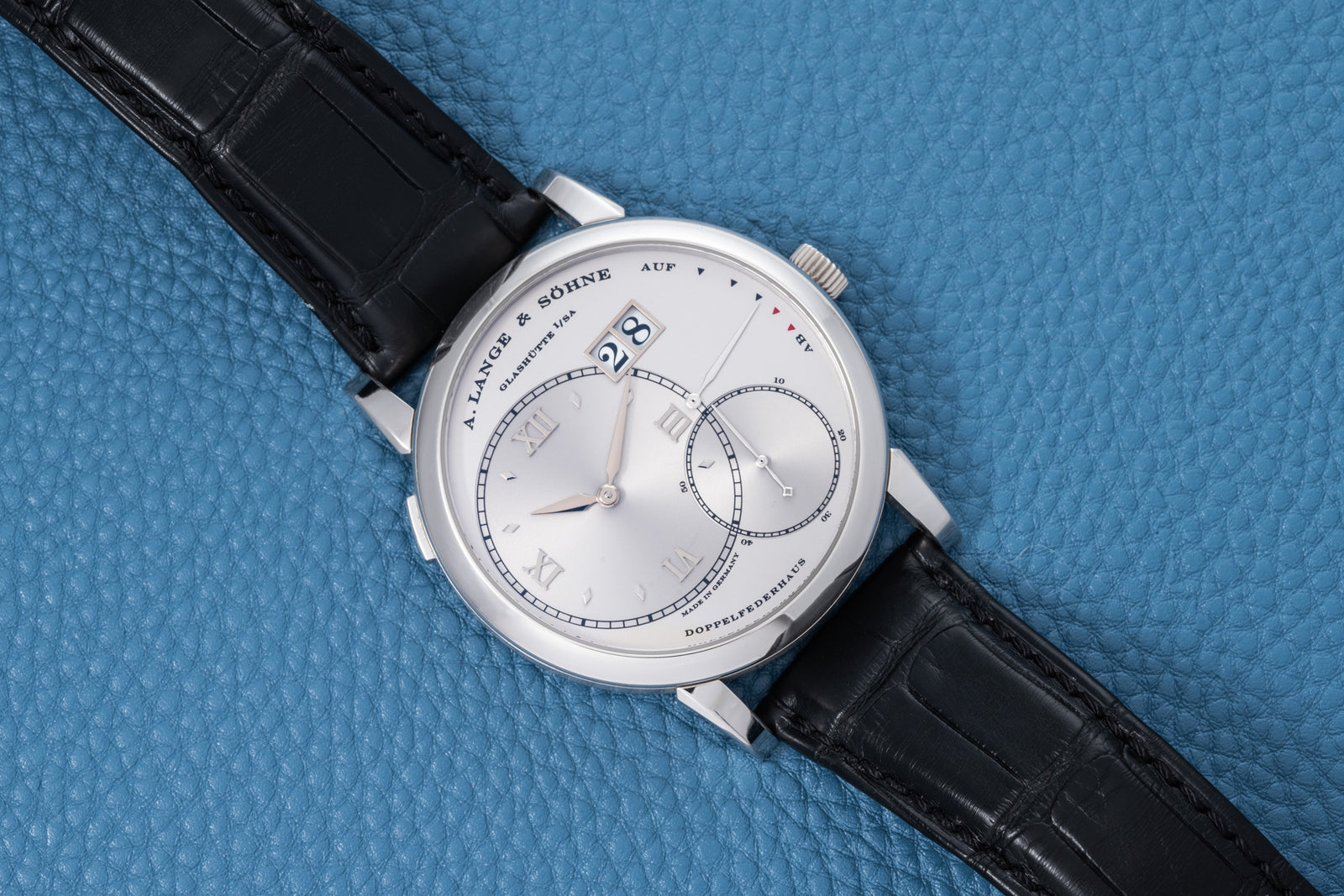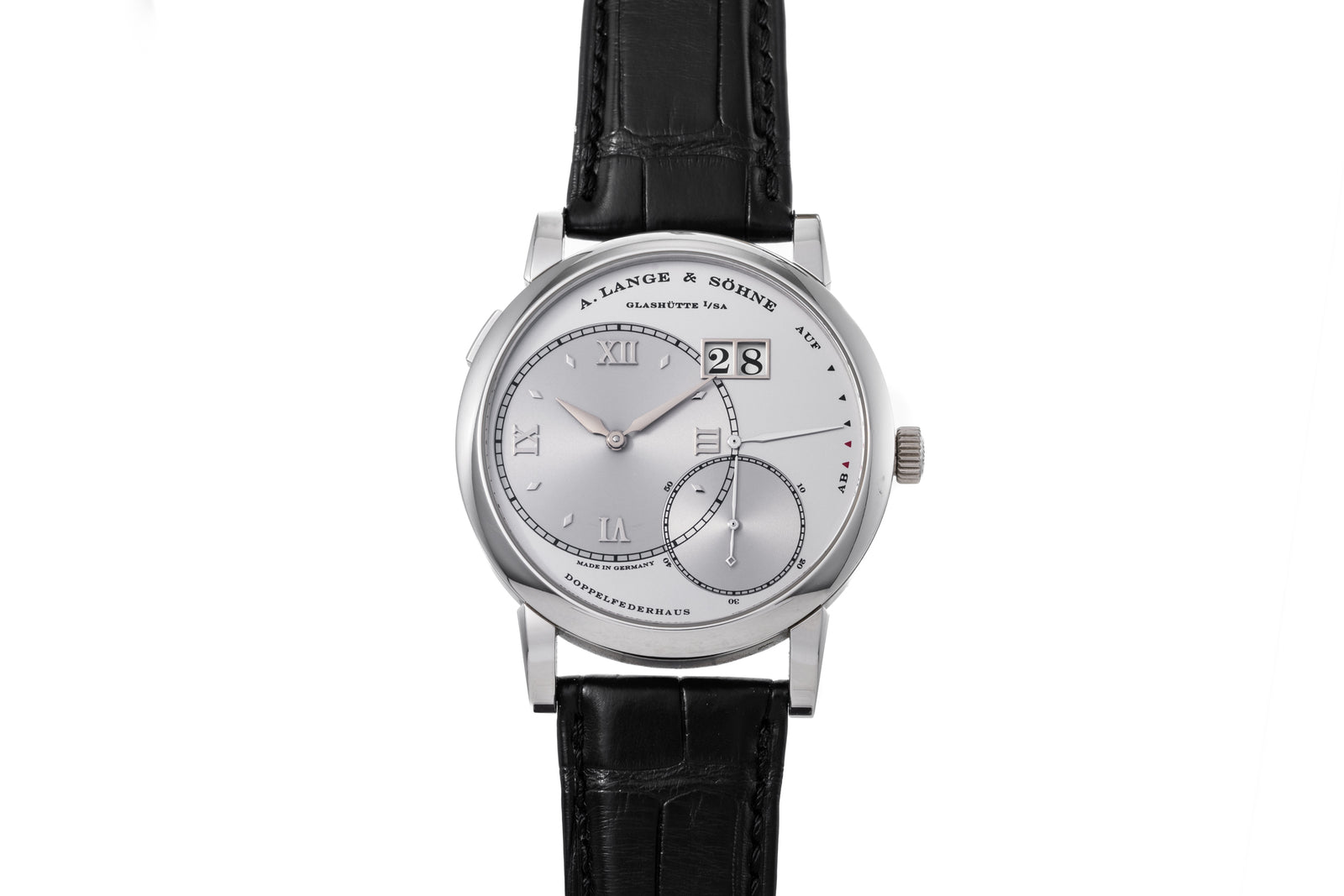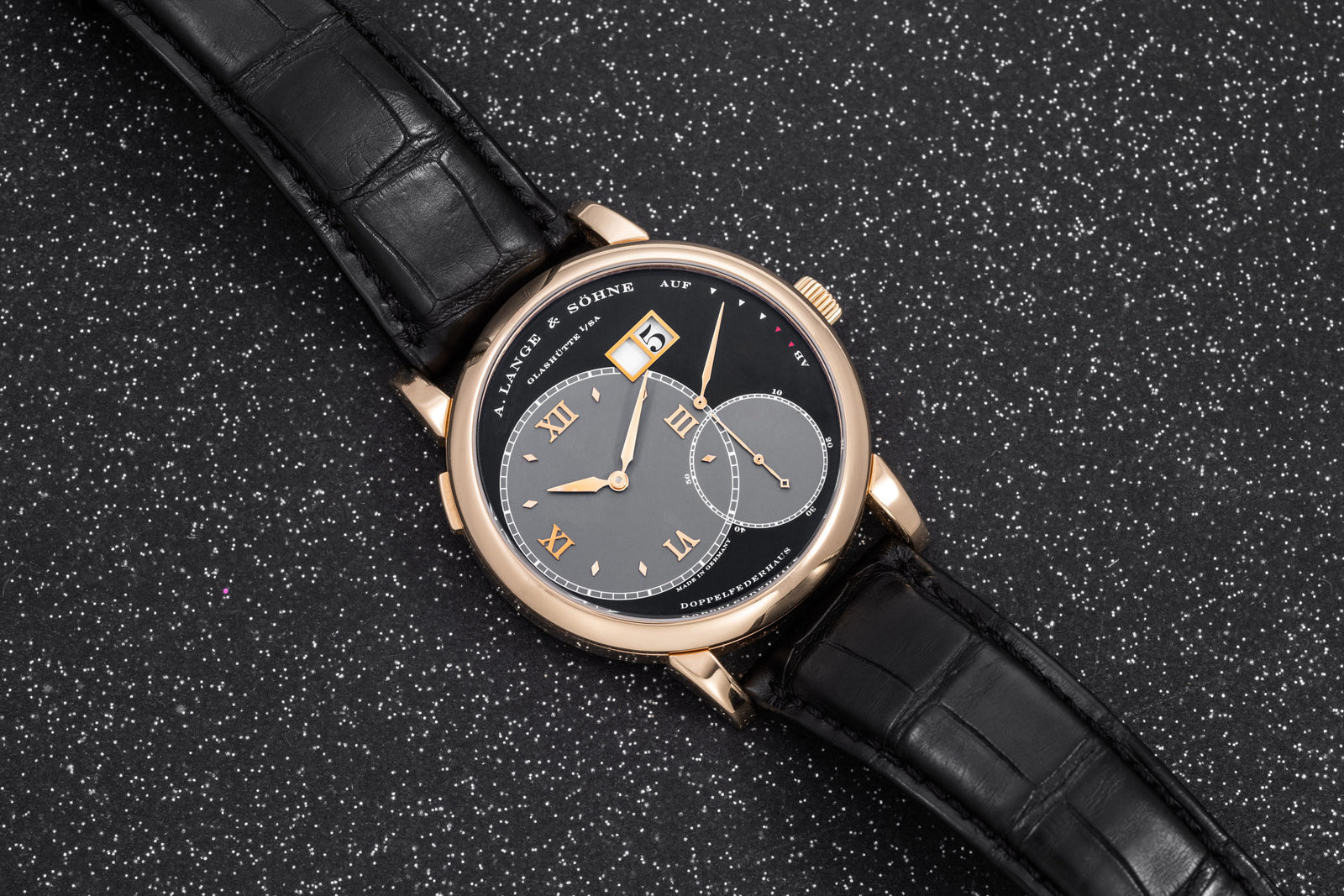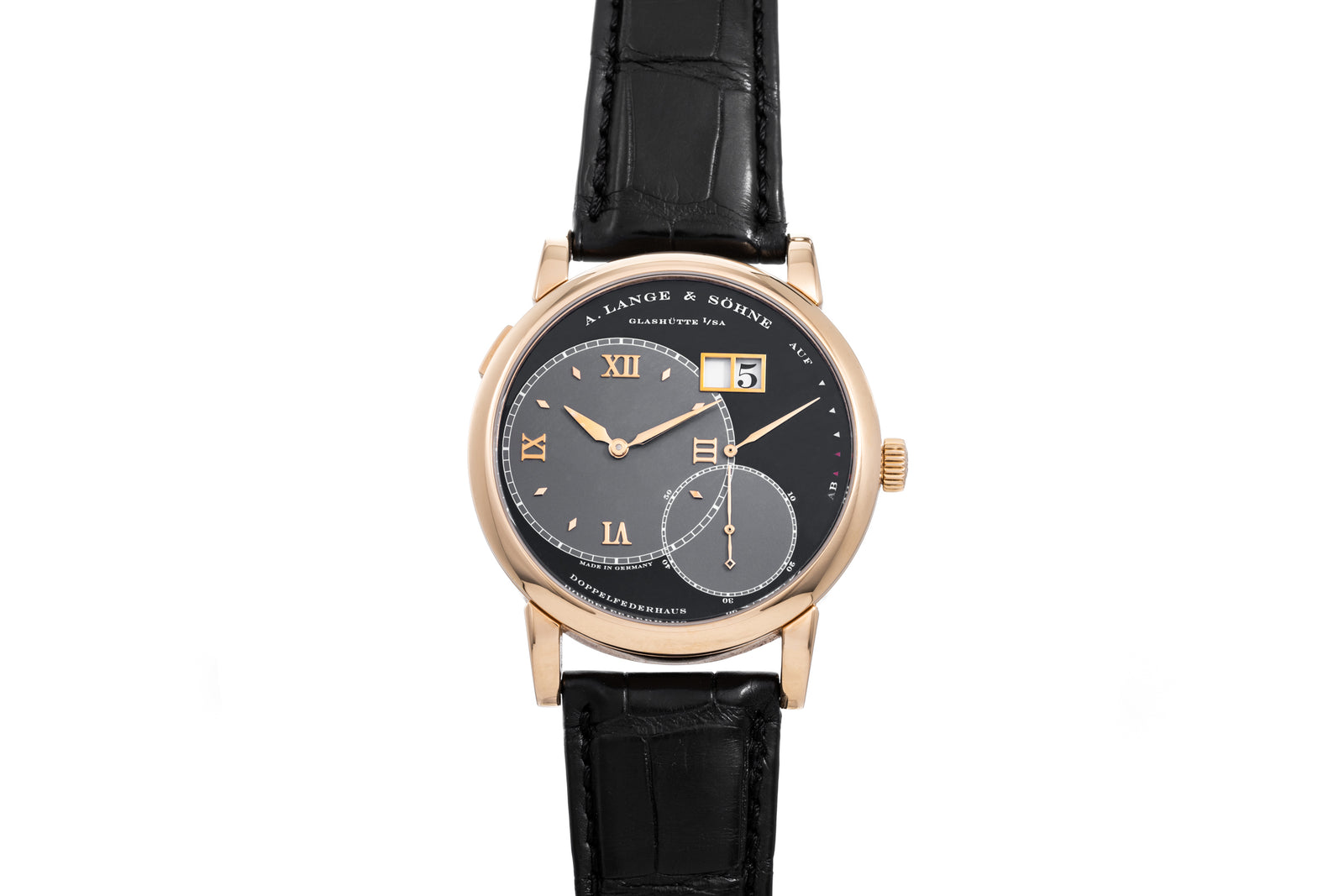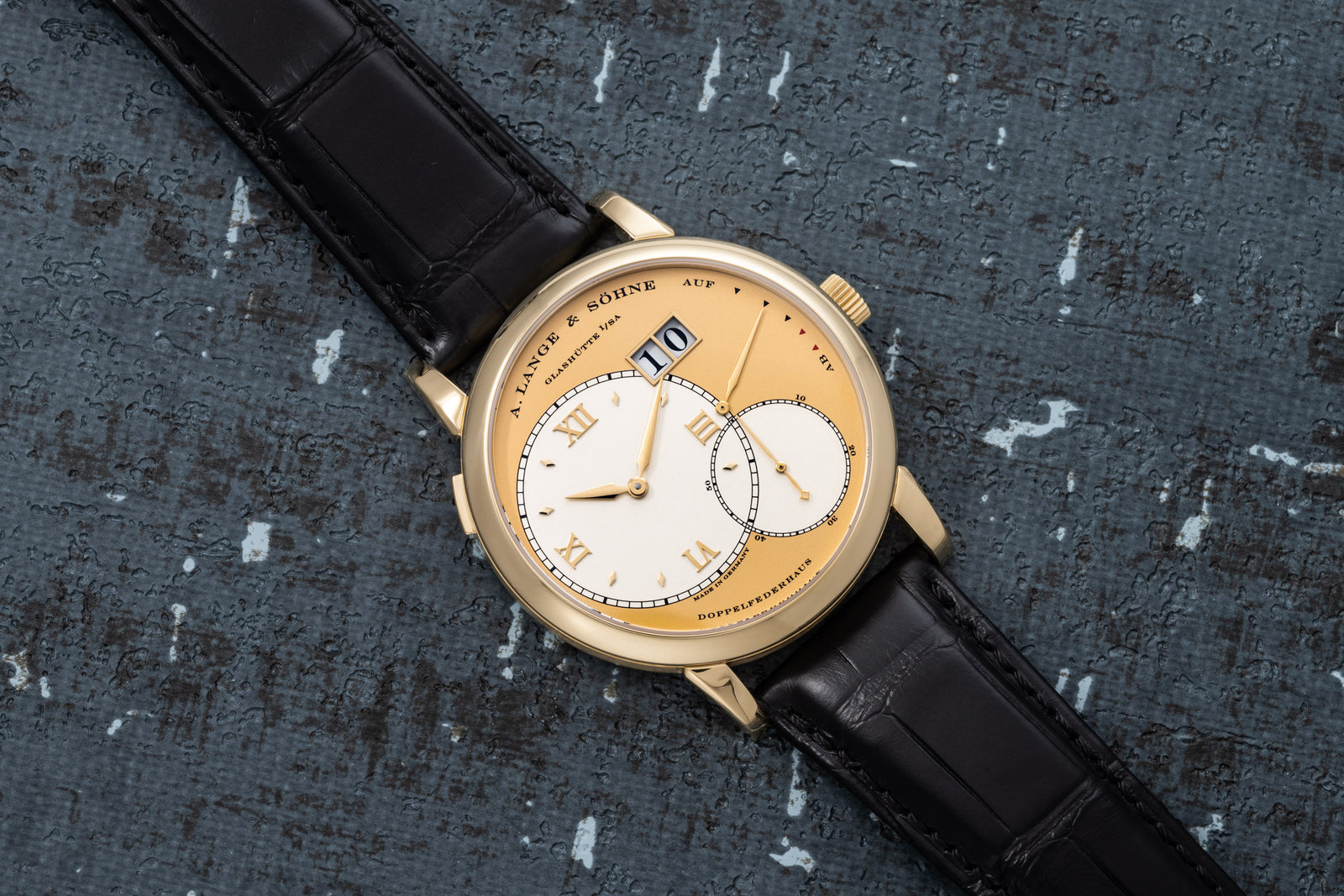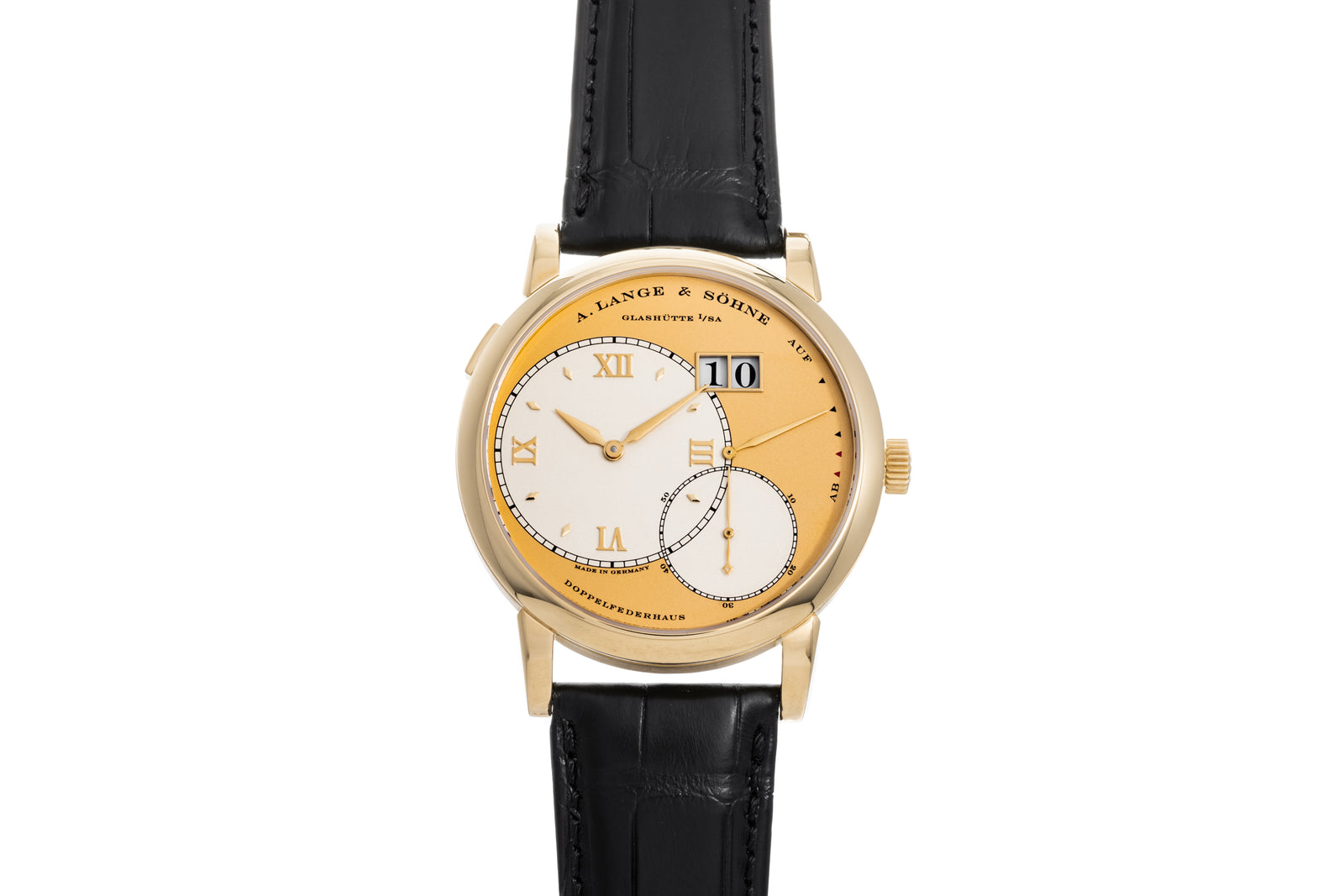Omega Speedmaster Ref. 2998-3
- Soldspan>
- Sold
Why We Love it
–
Why We Love it
–Project Mercury represented America's ability to put a man in Space--the first steps toward putting him on the Moon. From 1957--when the Soviet Union launched the Sputnik satellite--to 1963, the Project (which cost $277 million in 1965) was fraught with tensions and mistakes. But the successful orbits of the Mercury 7--Scott Carpenter, "Gordo" Cooper, John Glenn, Gus Grissom, Wally Schirra, Alan Shepard, and "Deke" Slayton--paved the way for the Gemini missions and, ultimately, the Moon landing.
But the story of the Project Mercury doesn't belong solely to the Mercury 7. It belongs to the men and women--scientists, engineers, and mathematicians--whose work for the National Advisory Committee on Aeronautics (the predecessor to NASA) made it all possible. Back then, computers were people--and many of these computers wore skirts.
In 1952, a young woman named Katherine Johnson was vacationing in Newport News, VA. She'd heard from a family friend that the Langley Research Center in Hampton, VA was looking for female computers. So she applied, and spent five years in the all-female "computer pool" performing calculations using data gleaned from the black boxes of airplanes.
However, in 1958, Johnson was assigned to the flight research team in the Spacecraft Controls Branch--comprised entirely of men. The purpose of the flight research team was to calculate the flight trajectories for the Mercury astronauts' spaceflights. Fortunately, Johnson (who was among the first three African American students to desegregate the graduate school at West Virginia University) had an affinity for geometry, which aided her in calculating the trajectory for Alan Shepard's flight in 1959.
Then, in 1962, NASA shifted to using electronic computers--but Johnson was still deemed as invaluable by none other than John Glenn, who refused to fly until Johnson verified that the calculations of the electronic computer were correct.
Johnson continued her work with the digital computers through the remaining Mercury and Gemini missions--including Walter Schirra's in 1962--and calculated the trajectory for the flight that would take Neil Armstrong and Buzz Aldrin to the moon.
On October 3, 1962, Walter M. Schirra orbited the Earth in a Mercury rocket with the call-sign Sigma 7. The mission that Schirra piloted, Mercury Atlas-8, was the fifth manned space mission in the Project Mercury. Schirra orbited the Earth a record six times, making his the longest manned spaceflight ever achieved at that stage in the Space Race--the culmination of the work that Johnson and the other human computers did.
And the watch on his wrist: the Reference CK 2998, which Schirra purchased for his own personal use in the flight. The Reference CK 2998 ran until 1963, and underwent eight sub-references in its four year run. It was ultimately discontinued and replaced in the Omega catalogs with its successor, newly-named ST 105.002 in keeping with the Mopics coding system Omega implemented in 1962.
Early Speedmasters, particularly those dating from the early days of the Space Race, are especially desirable. However, their relative scarcity--due to the brevity of their production runs--make them difficult to find on the vintage chronograph market in good condition. So when one appears it's a momentous occasion indeed.
This particular Reference 2998-3 has a strong case with correct D090 bezel which shows signs of proper wear and use, and a gorgeously patinated dial with all leaf hands.
Early "pre-Moon" references of Speedmaster--like this Reference 2998-3--carry a tremendous value, both historically and horologically, representing a pivotal period in Man's quest to go to leave Earth.
A:S Guarantee
+
A:S Guarantee
+Our Pledge
Analog:Shift stands behind the authenticity of our products in perpetuity.
Condition
Since our pieces are vintage or pre-owned, please expect wear & patina from usage and age. Please read each item description and examine all product images.
Warranty
We back each Analog:Shift vintage timepiece with a one-year mechanical warranty from the date of purchase.
International Buyers
Please contact us prior to purchase for additional details on shipping and payment options.
Shipping & Returns
+
Shipping & Returns
+All of our watches include complementary insured shipping within the 50 states.
Most of our products are on hand and will ship directly from our headquarters in New York City. In some cases, watches will be shipped directly from one of our authorized partners.
We generally ship our products via FedEx, fully insured, within 5 business days of purchase. An adult signature is required for receipt of all packages for insurance purposes. Expedited shipping is available at an additional cost. We are also happy to hand deliver your purchase in Manhattan or you may pick it up at our showroom.
Returns must be sent overnight or by priority international delivery, fully insured and paid for by the customer. A restocking fee may apply. Watches must be returned in the same condition as initially shipped.
We welcome international buyers, please contact us prior to purchase for additional details on shipping and payment options.
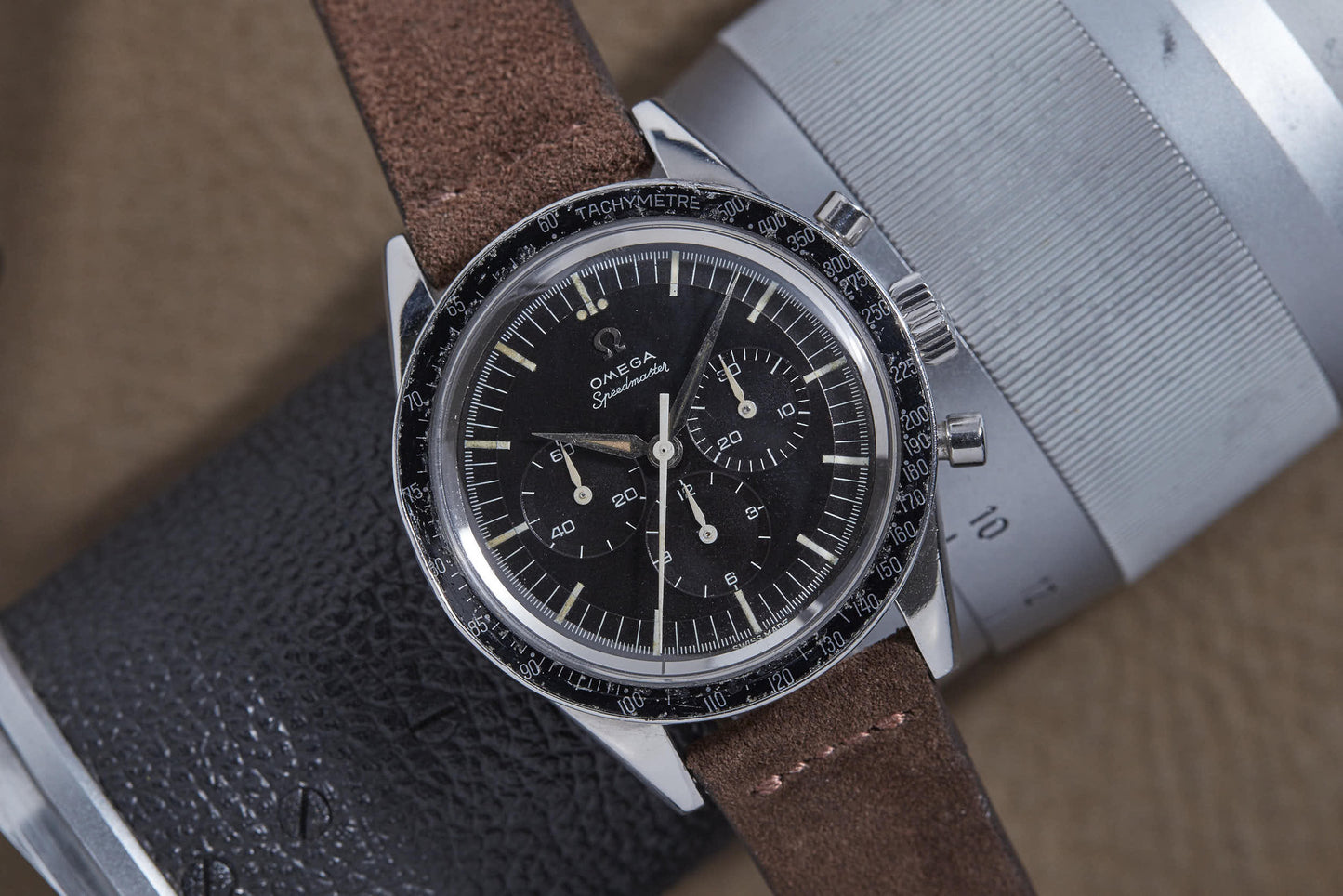
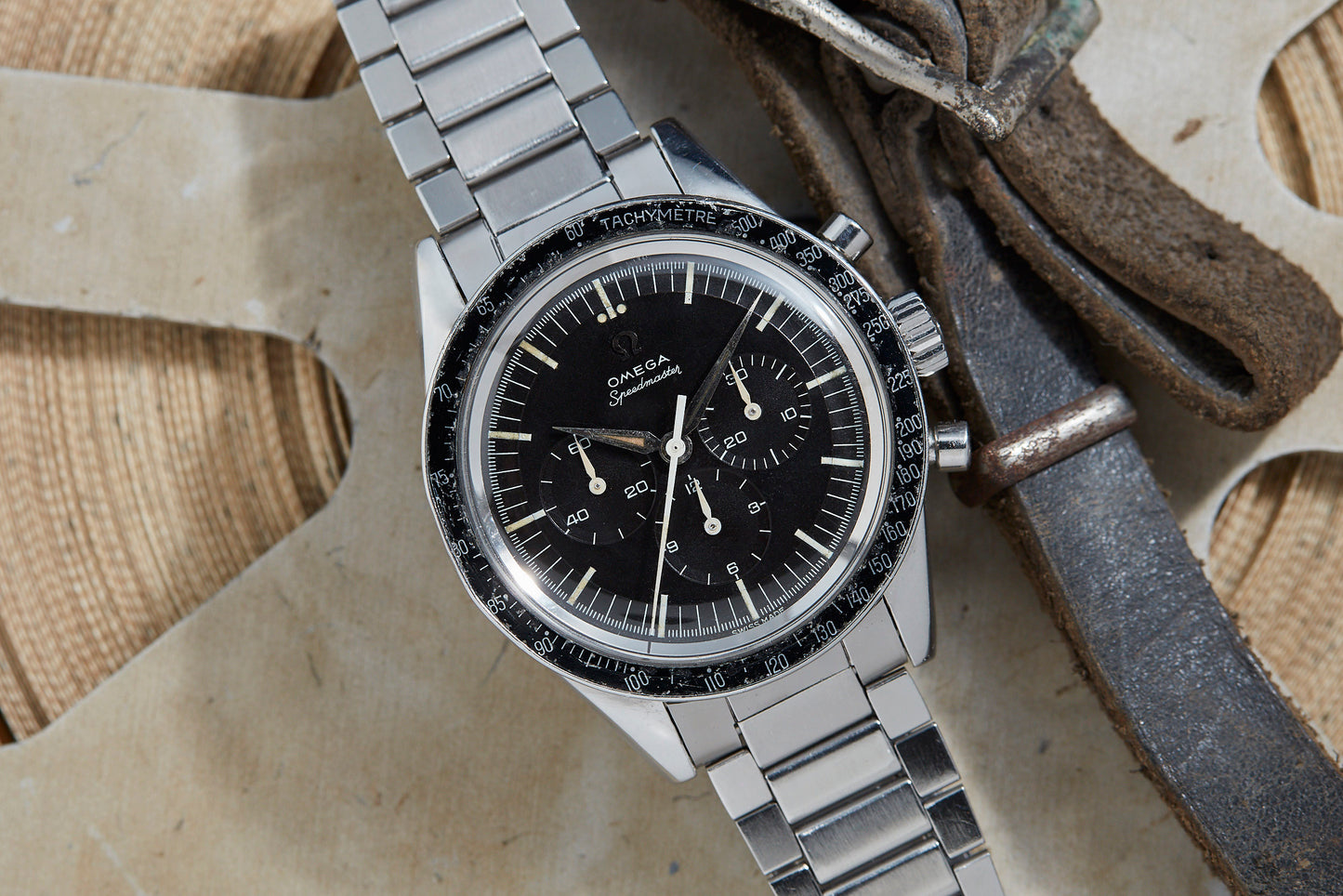
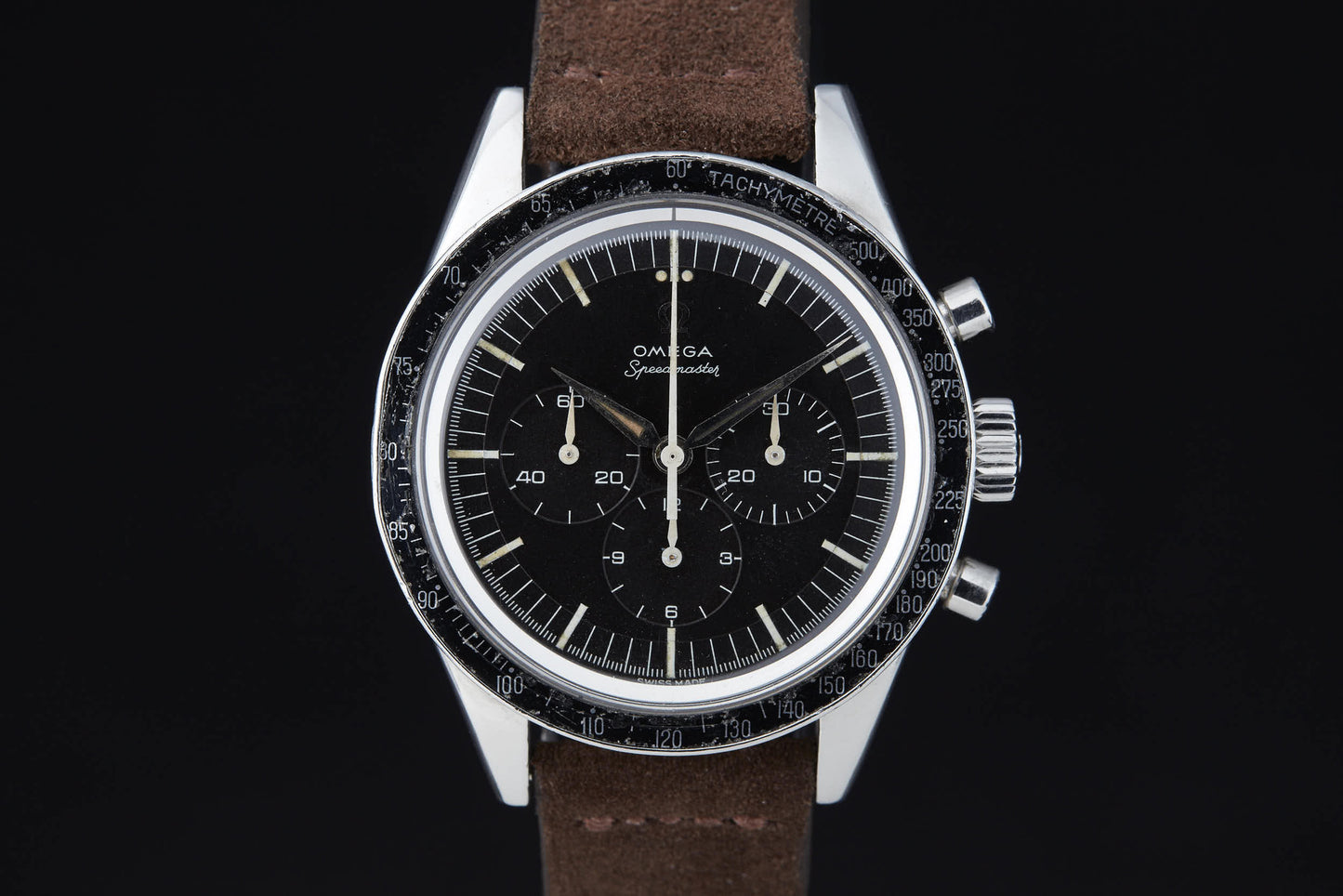
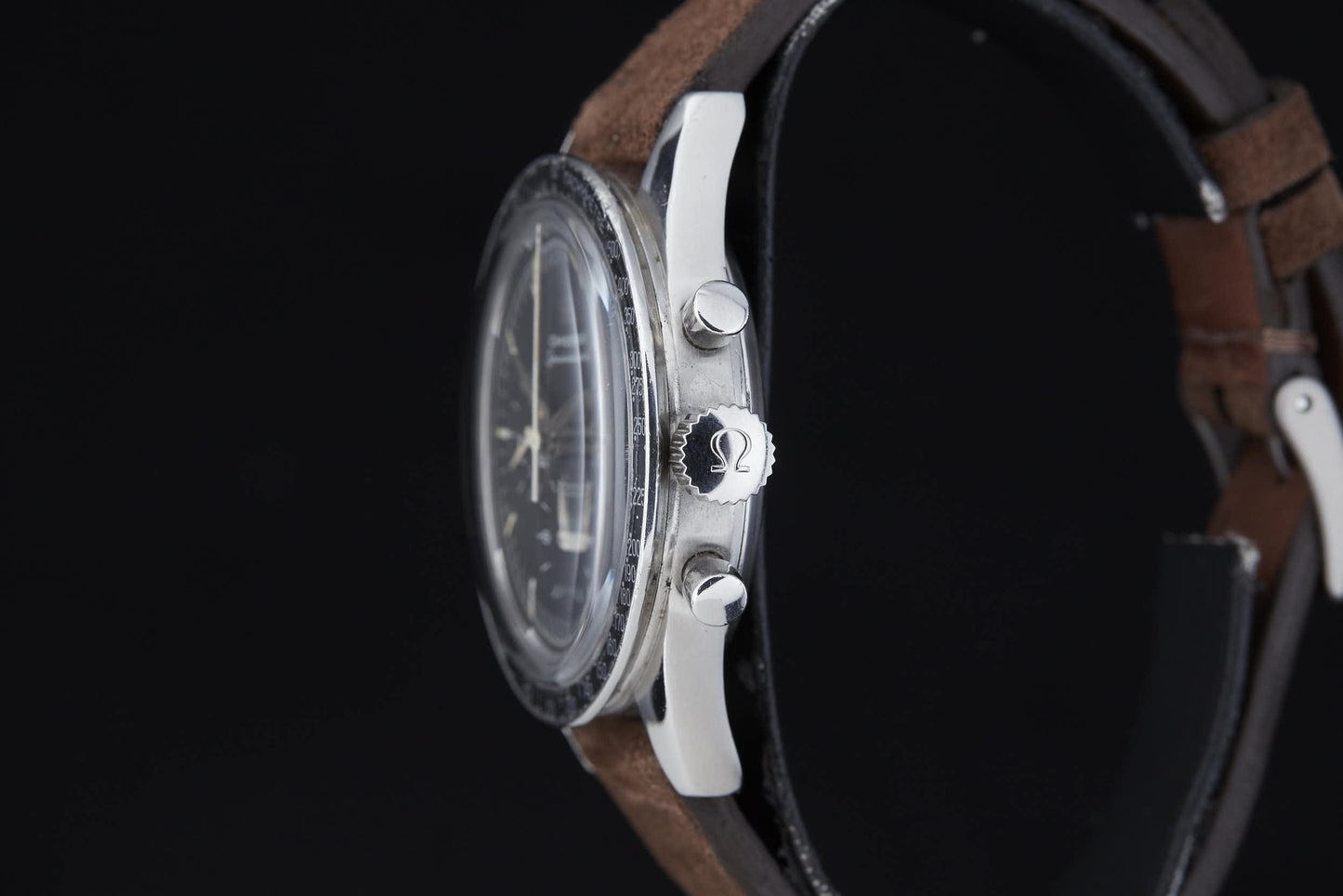
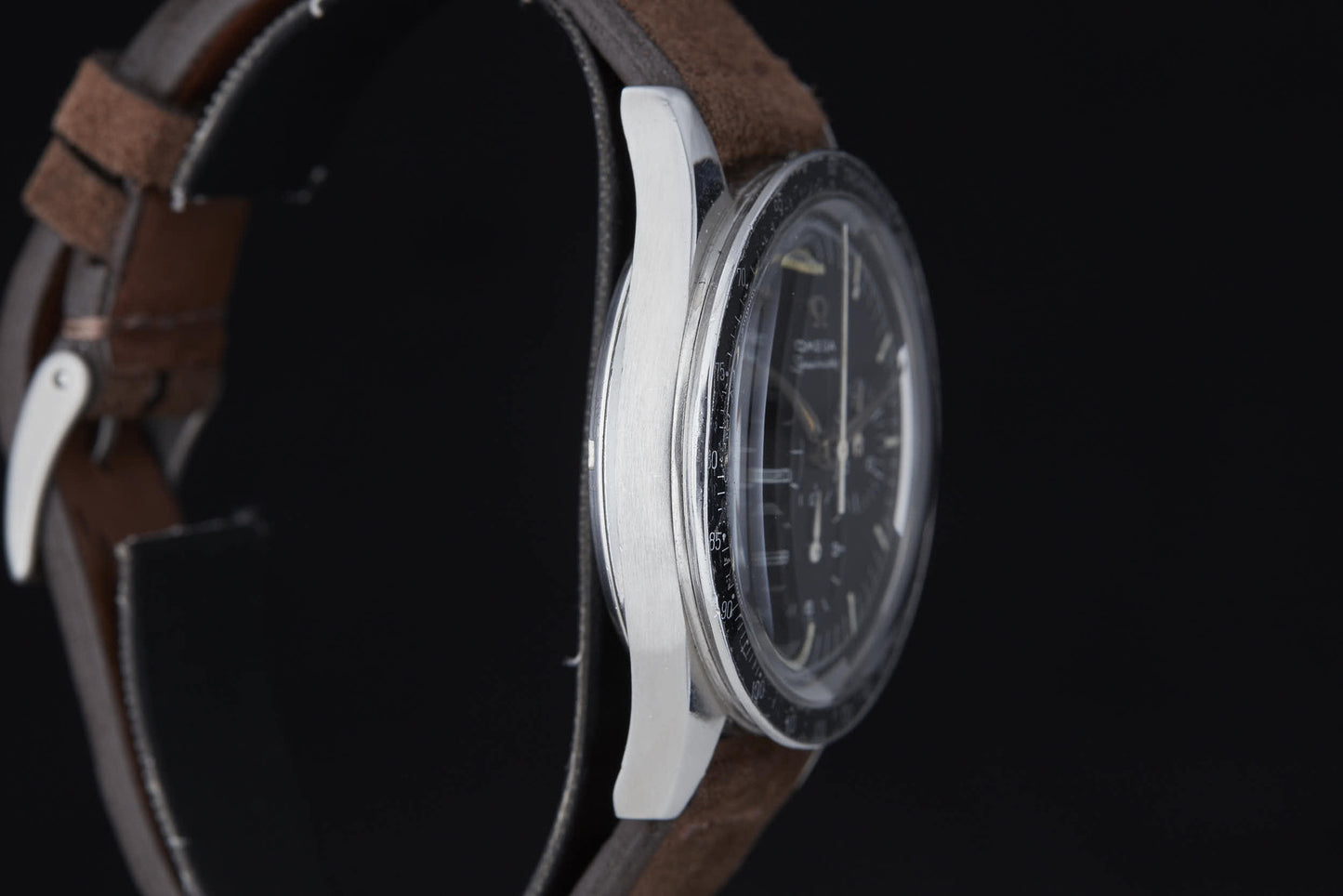
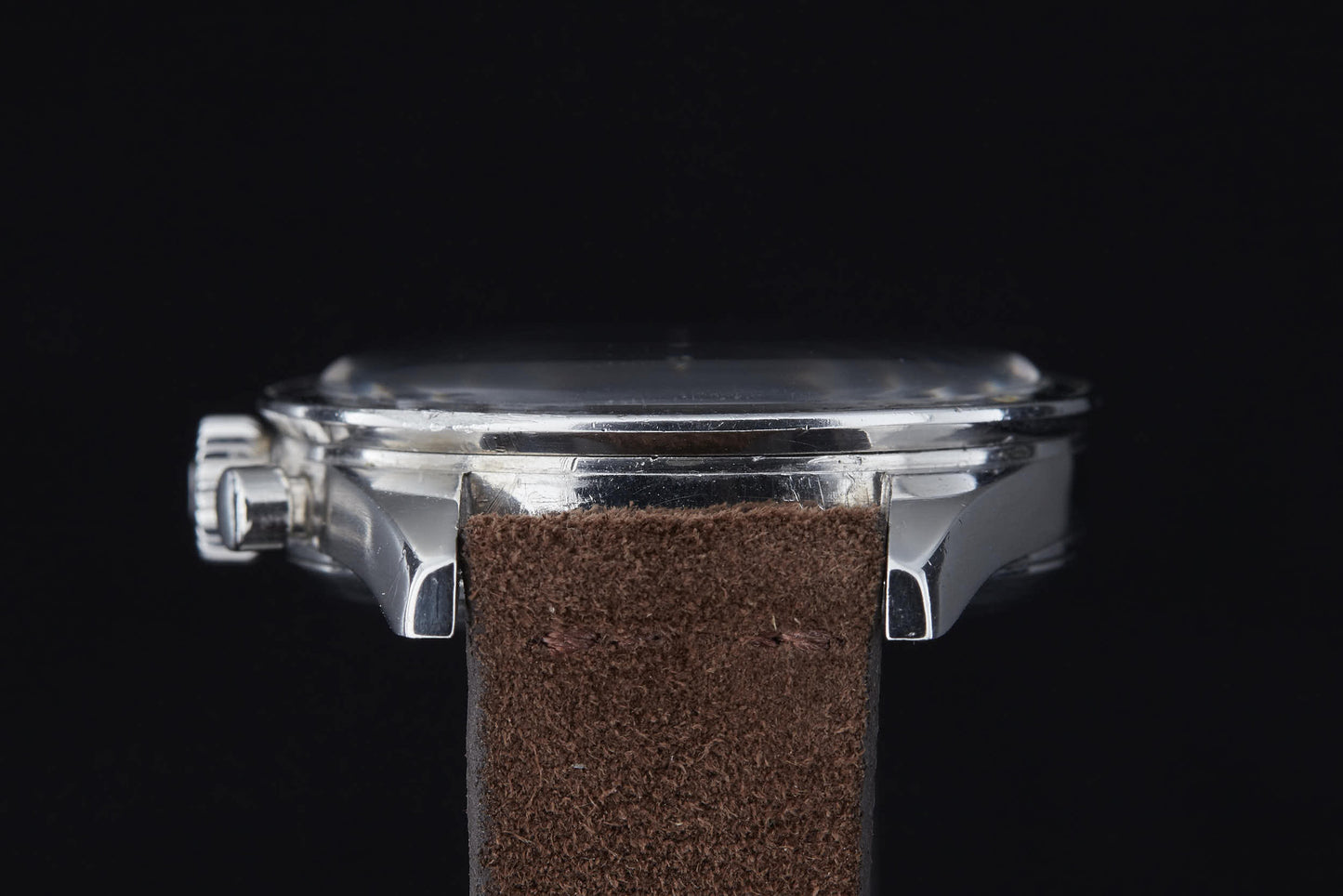
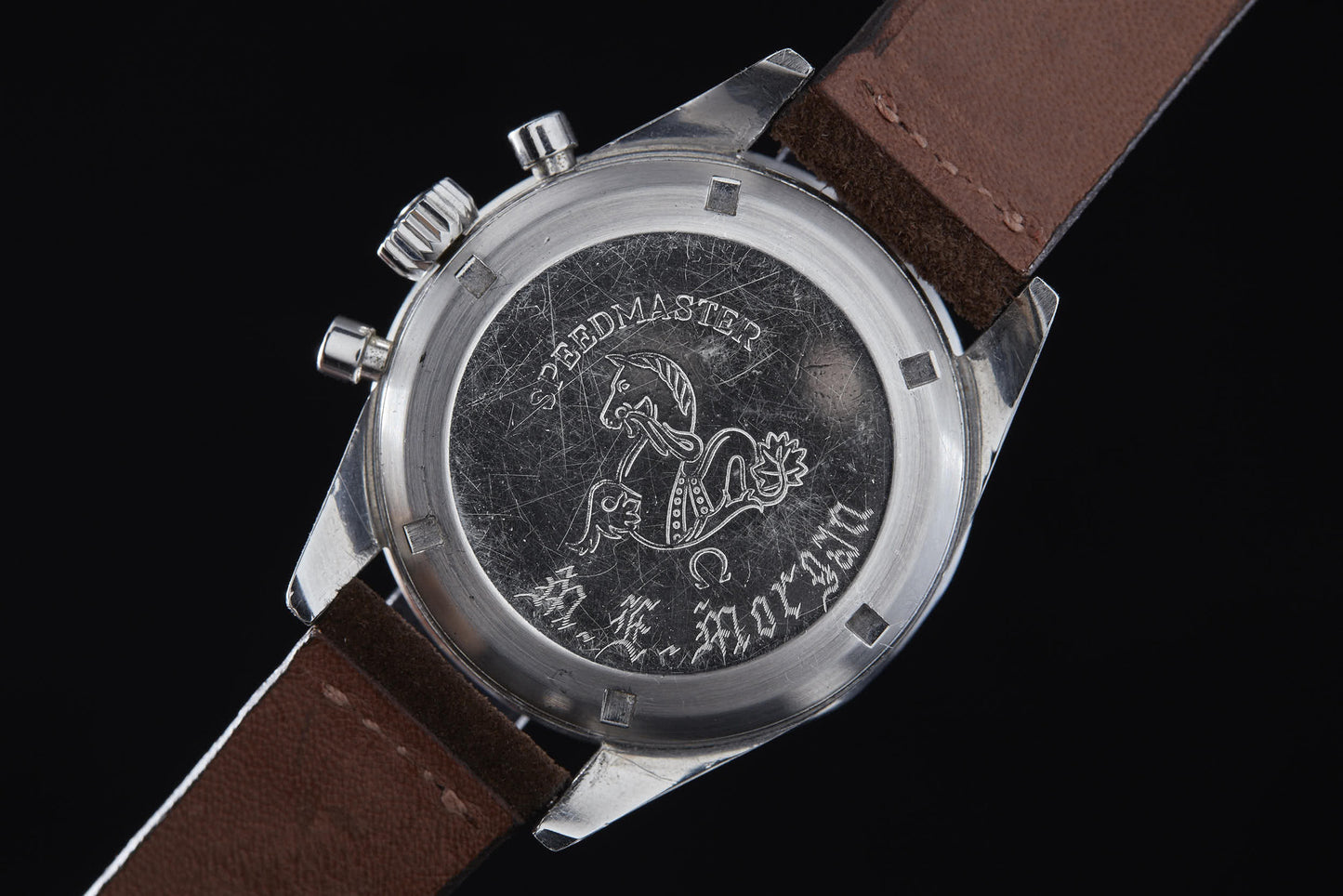

Omega Speedmaster Ref. 2998-3
- Soldspan>
- Sold
